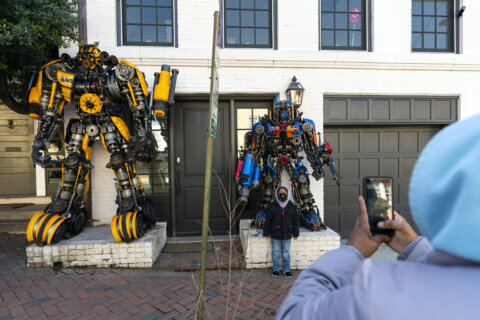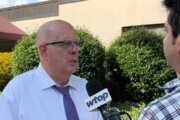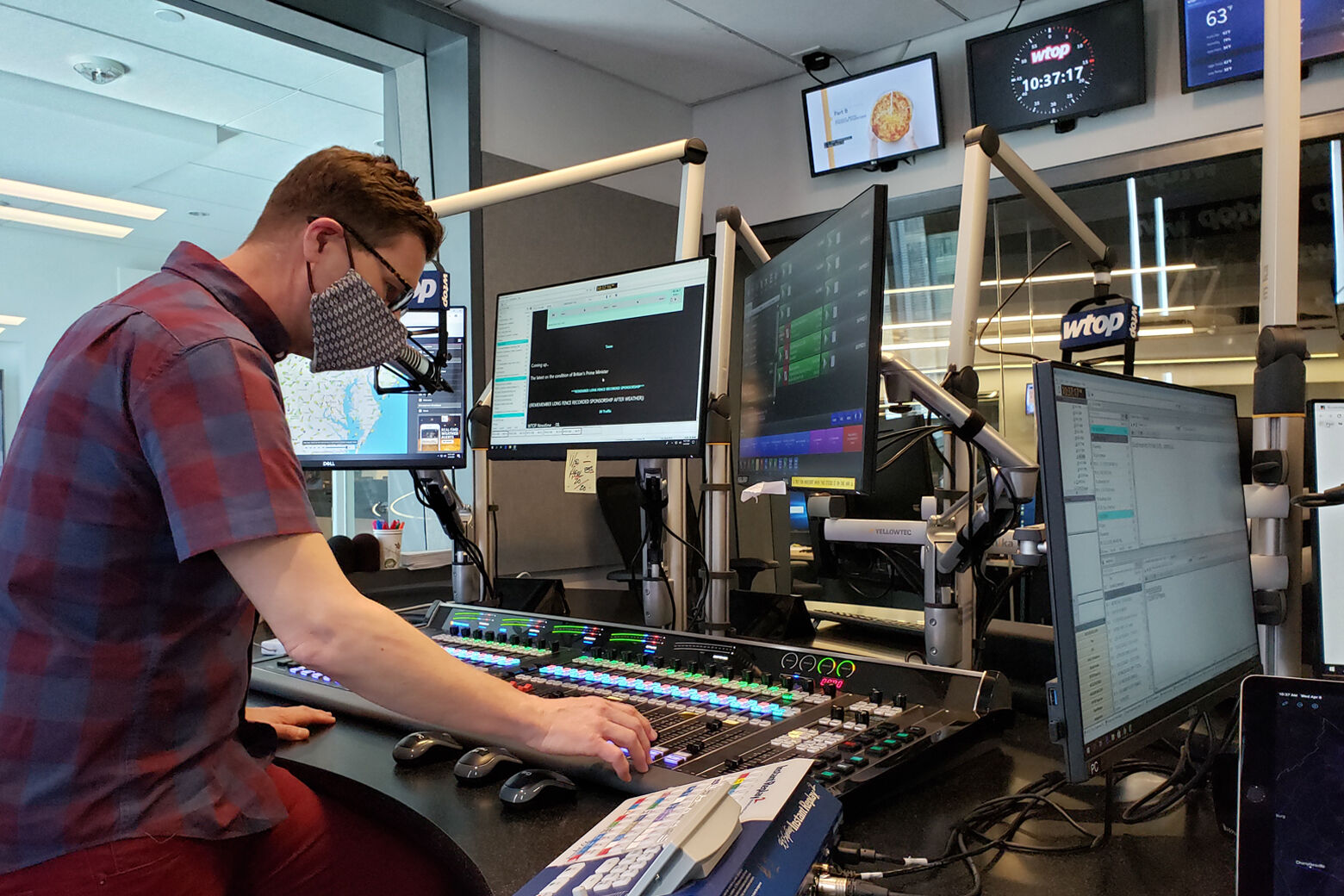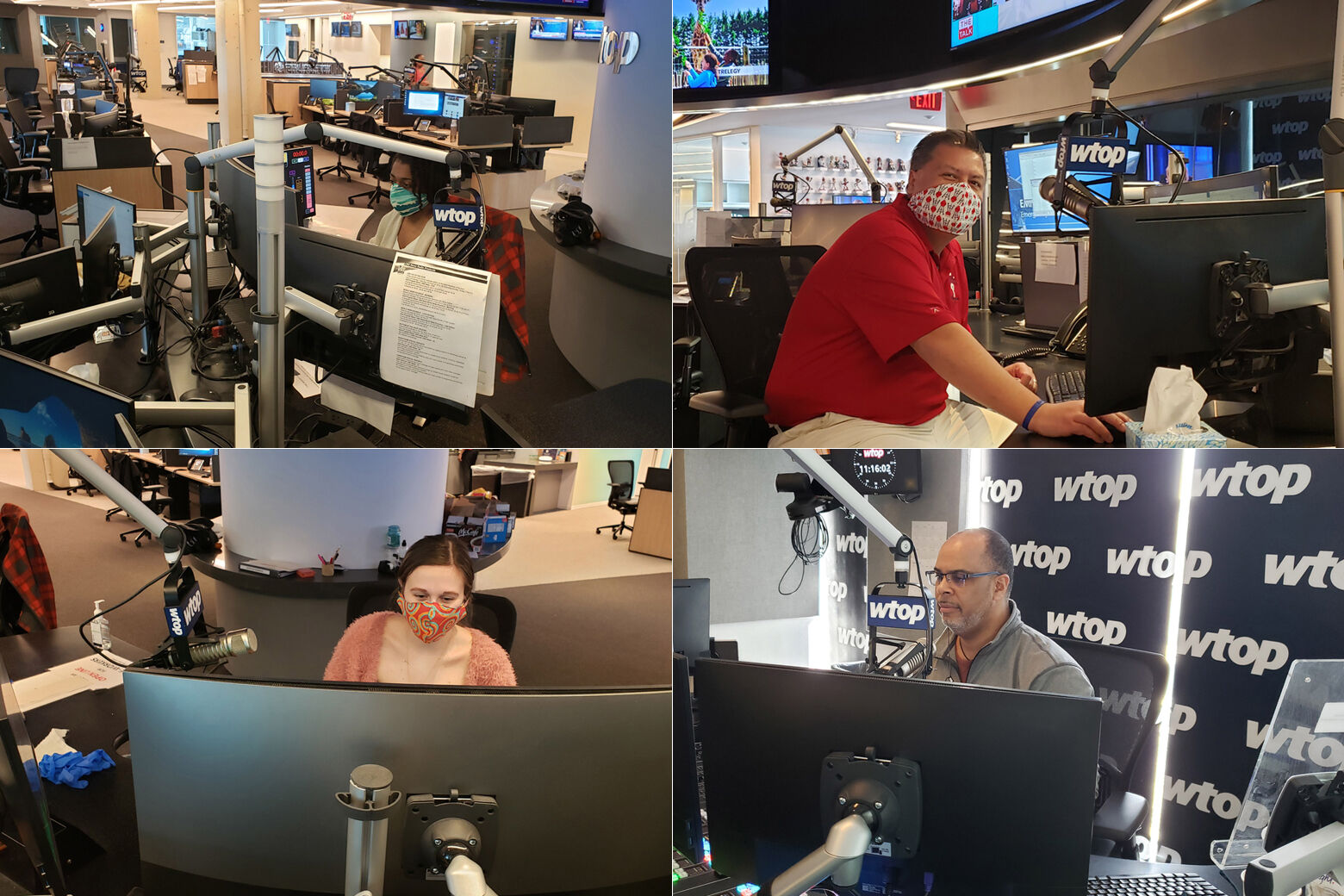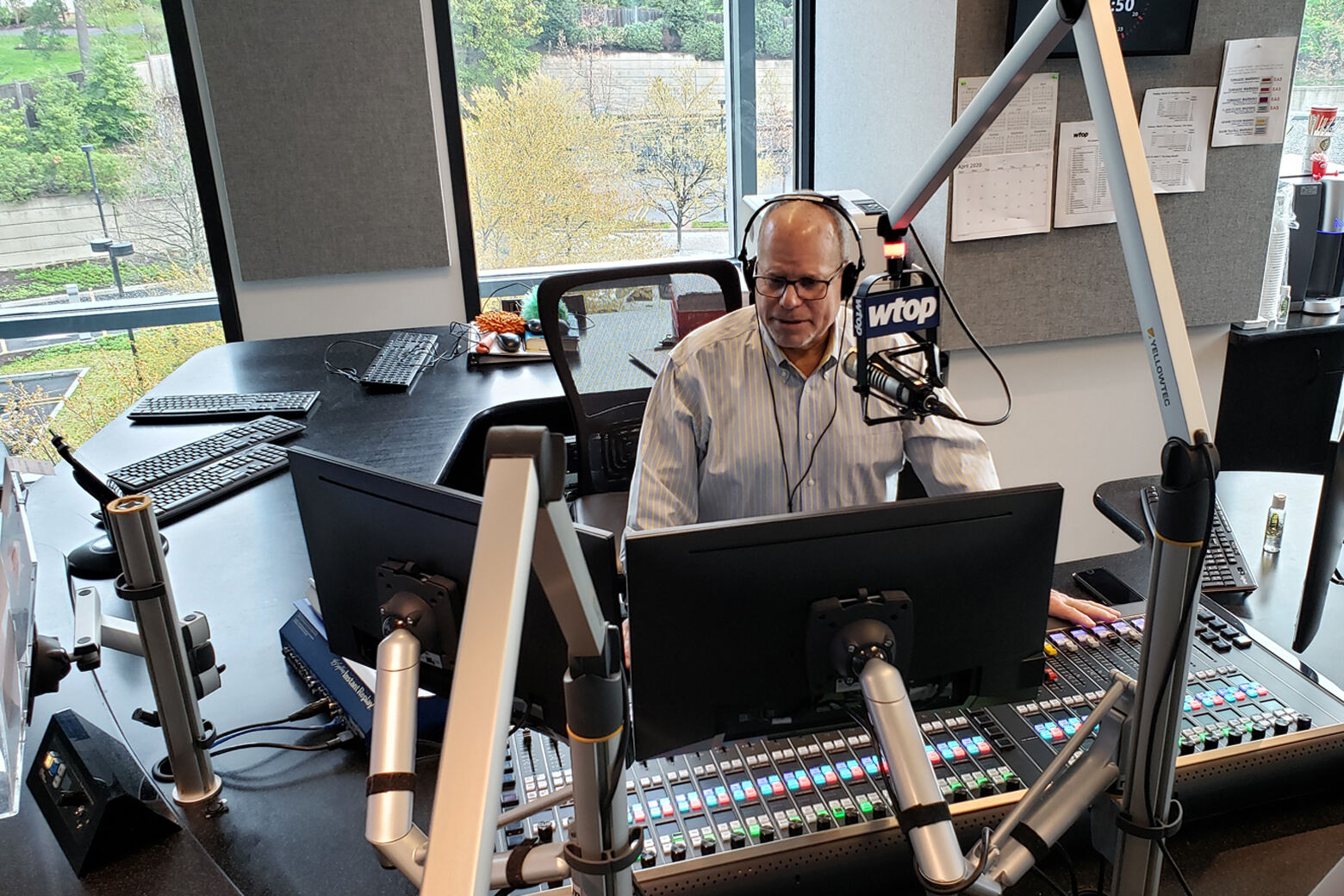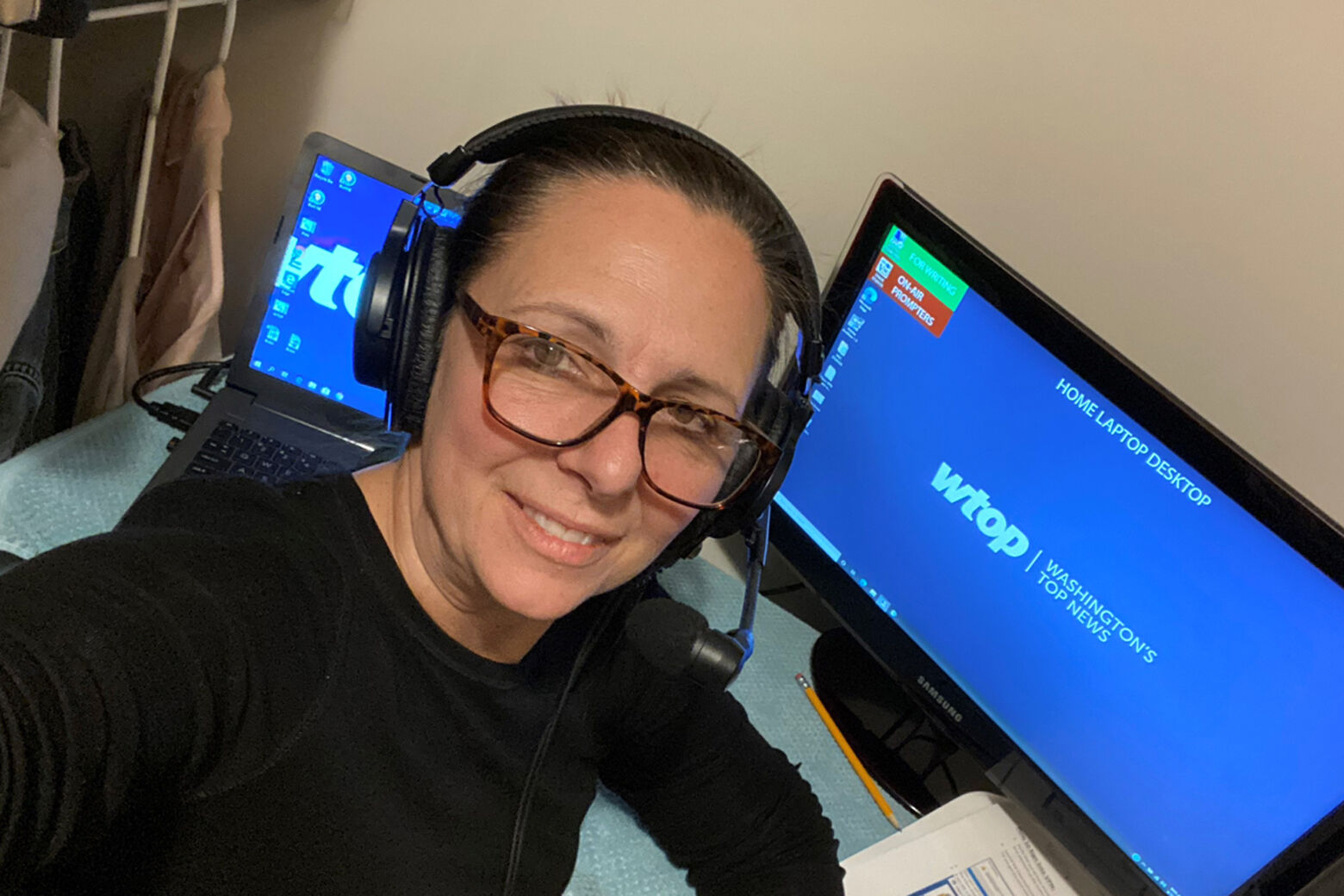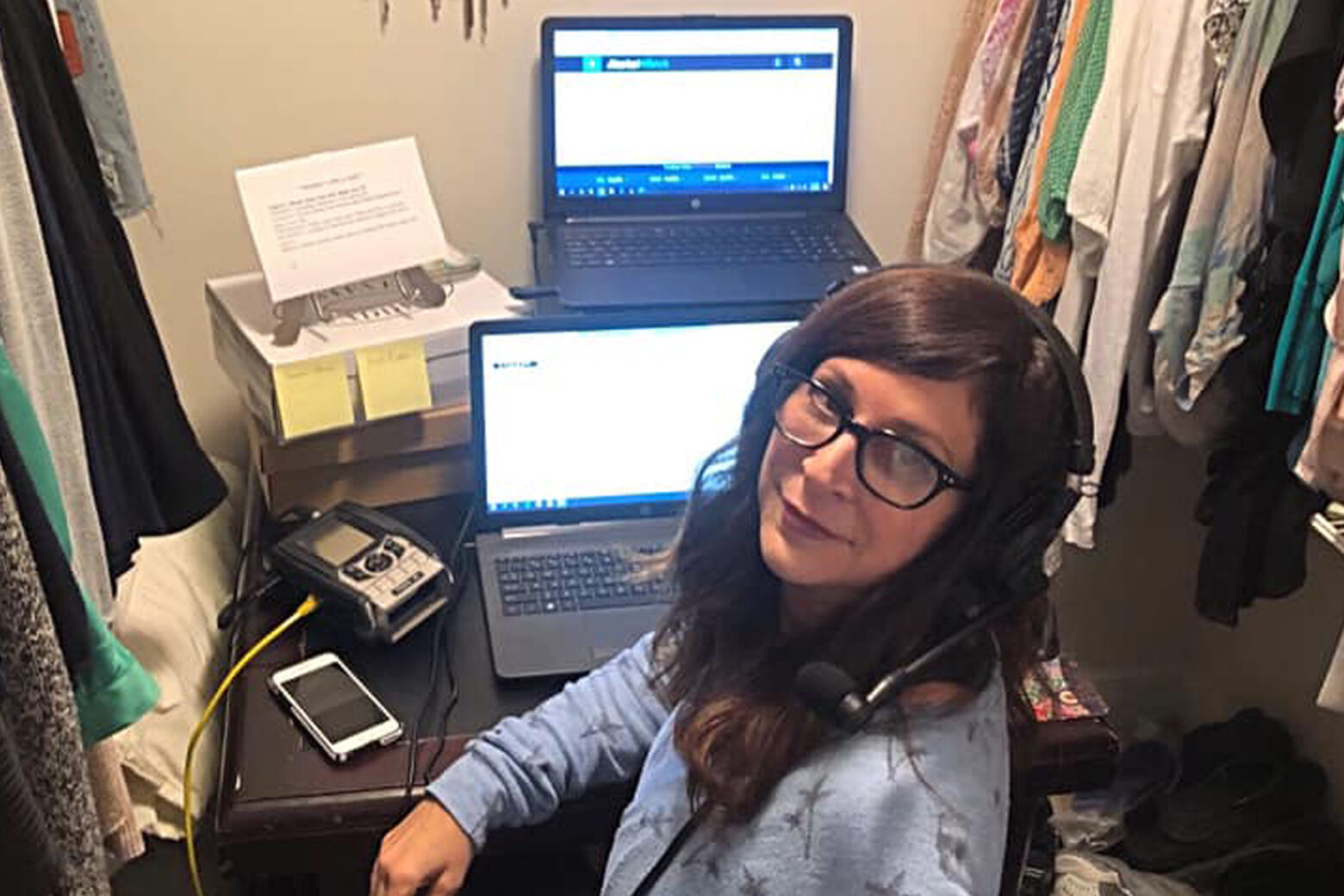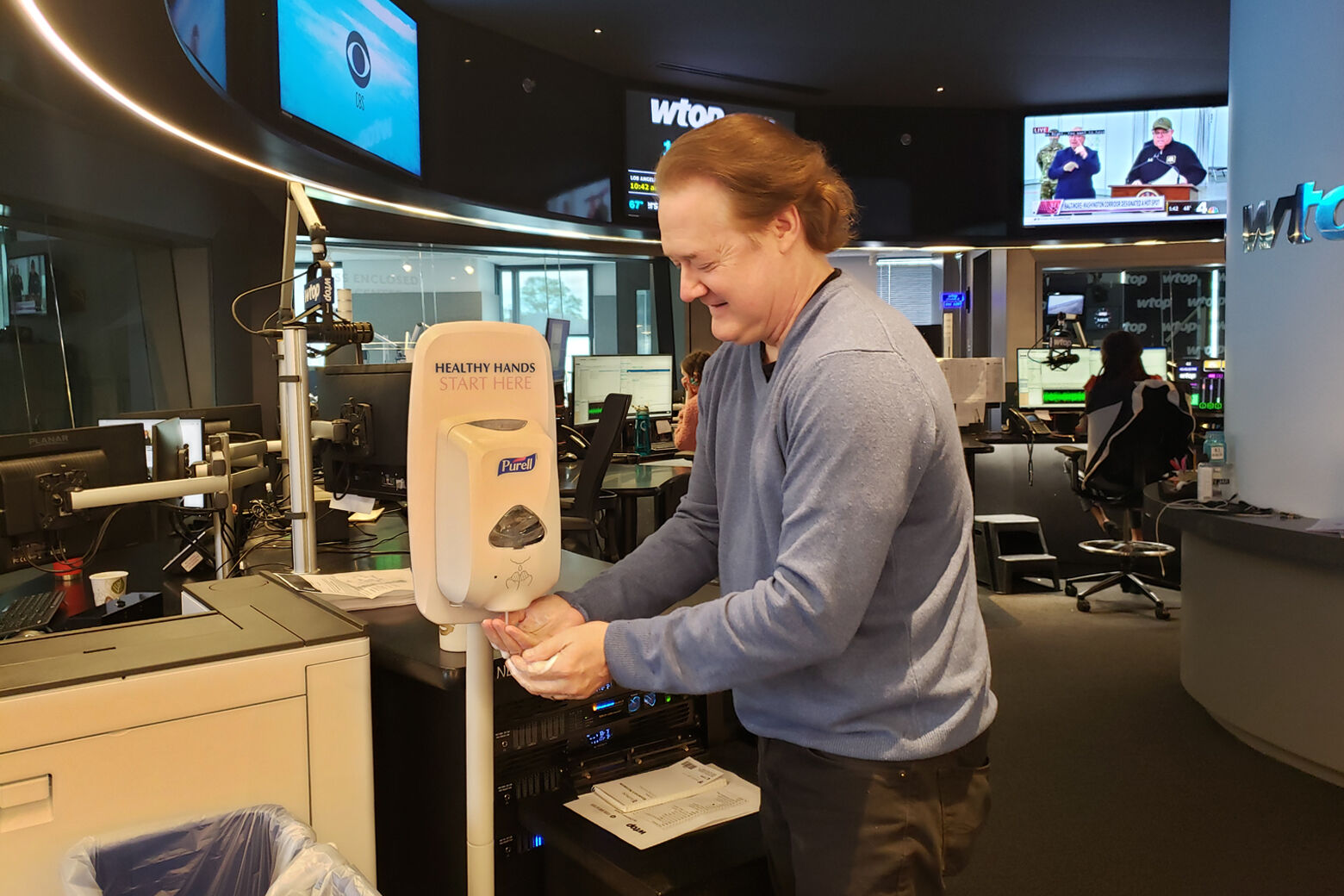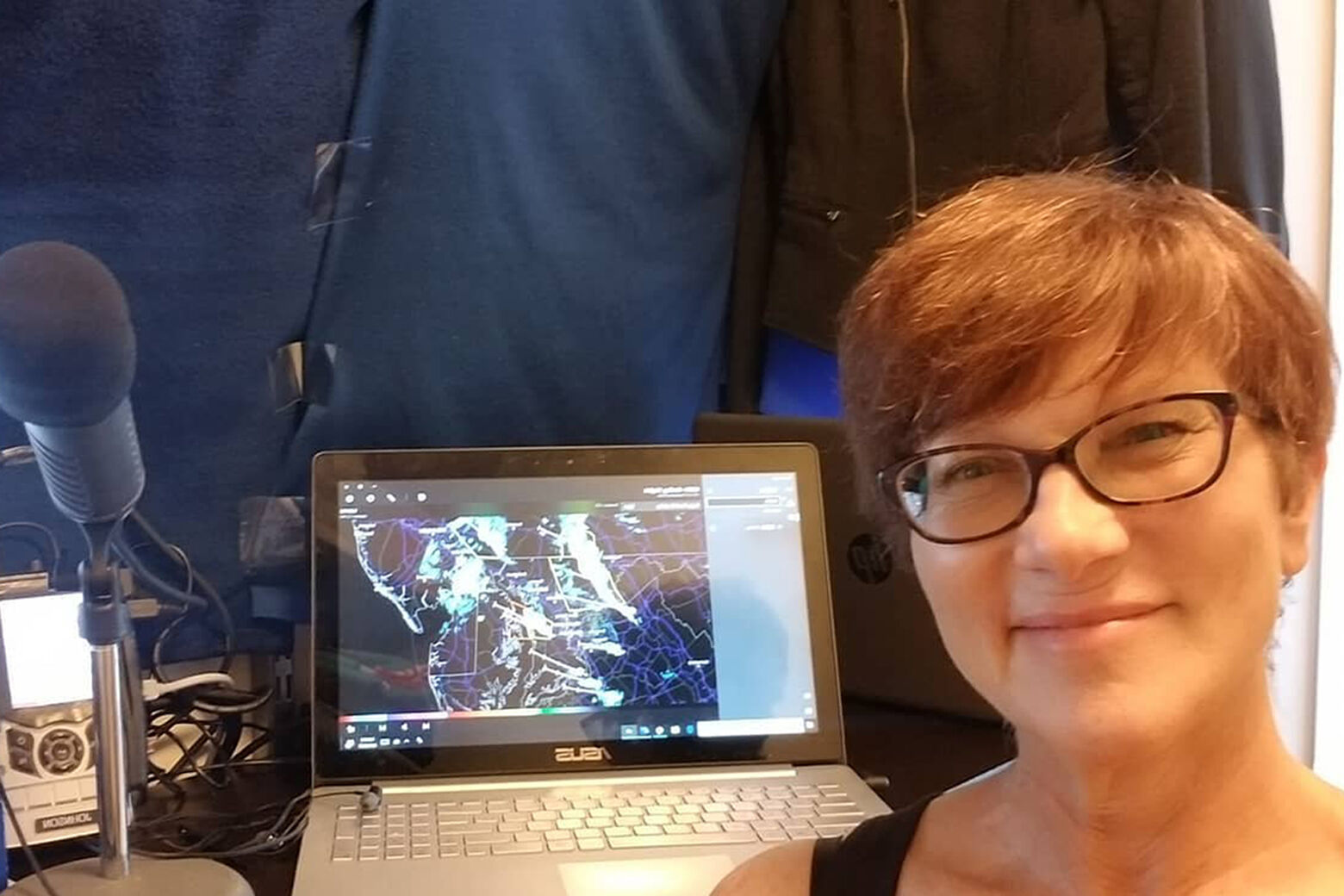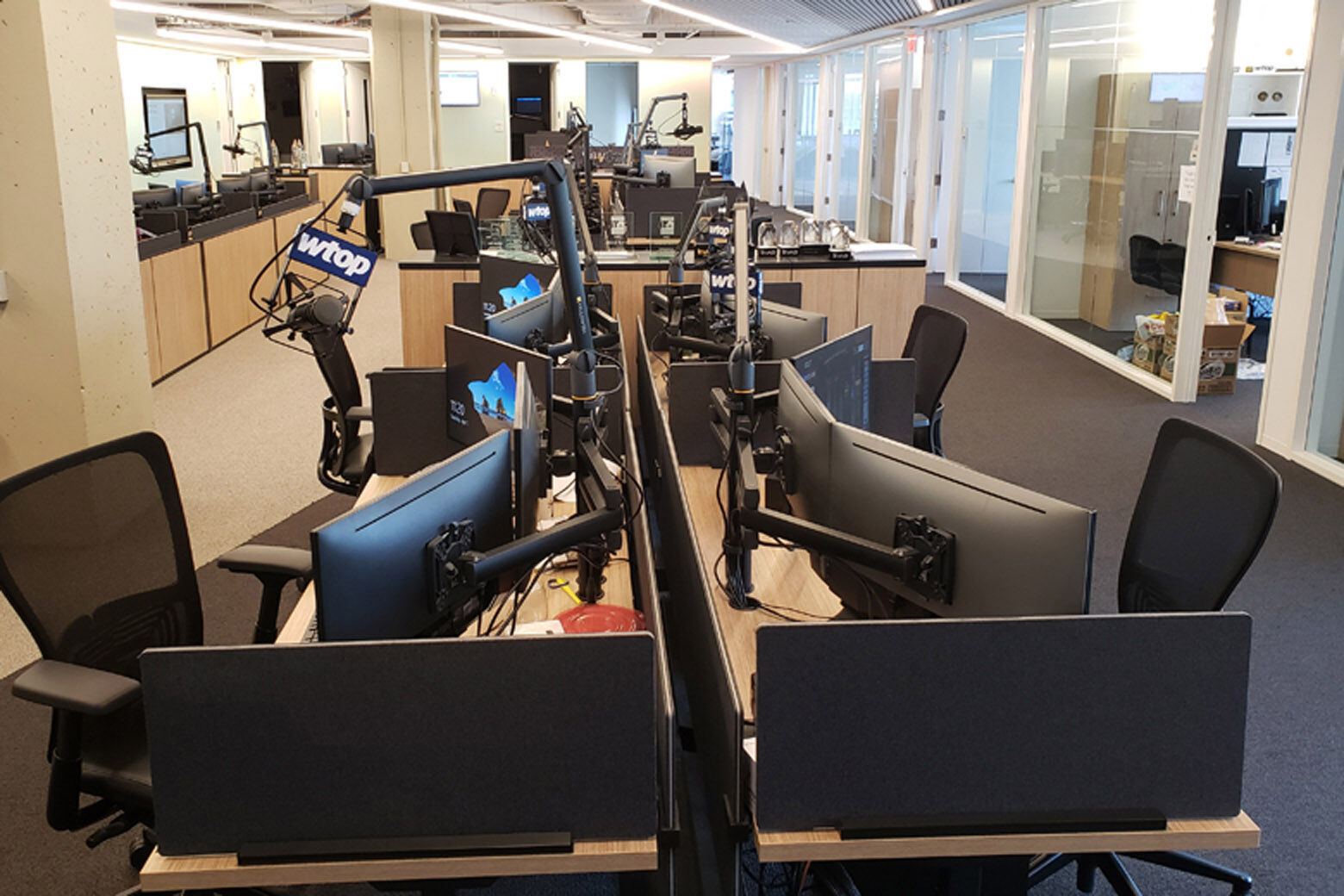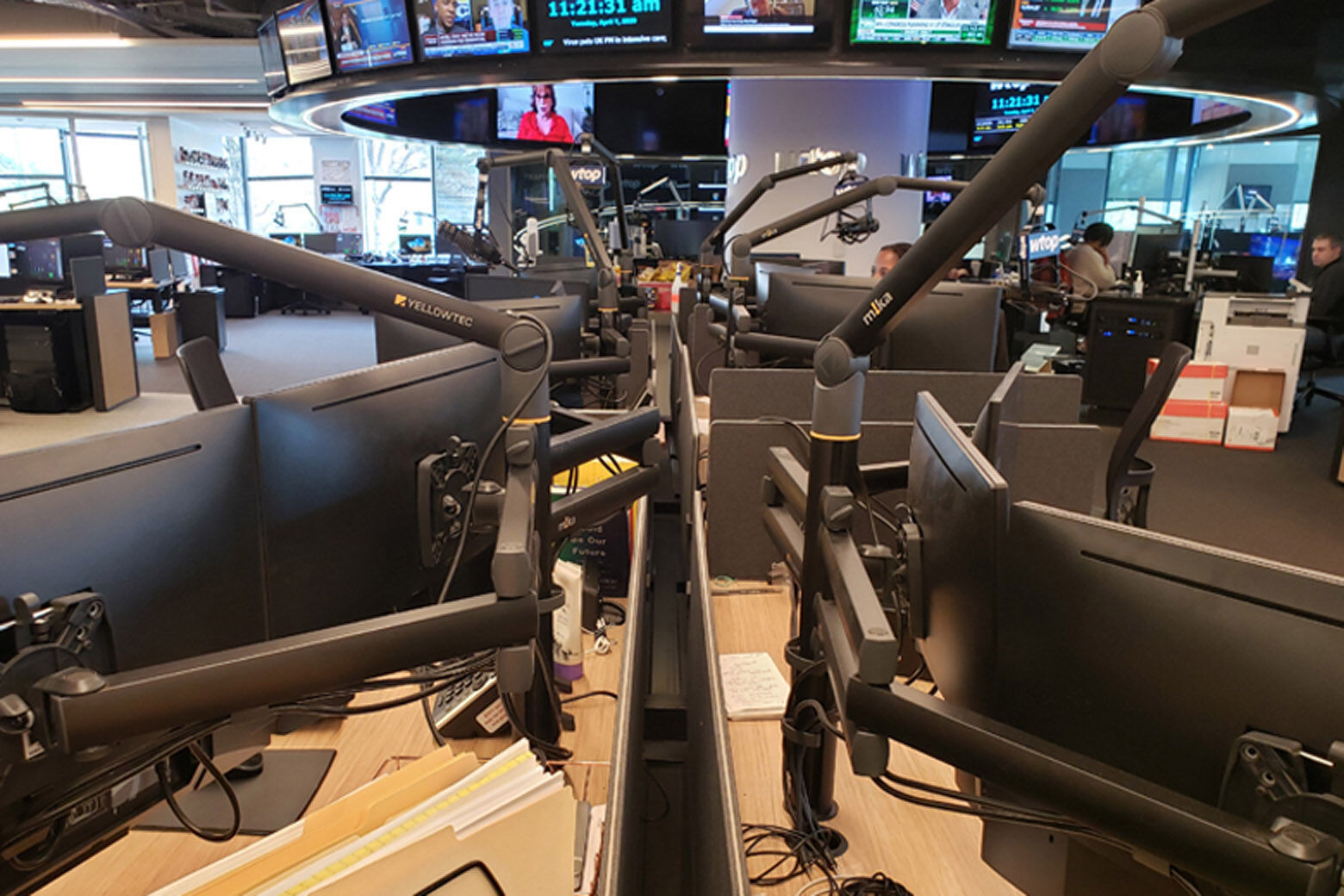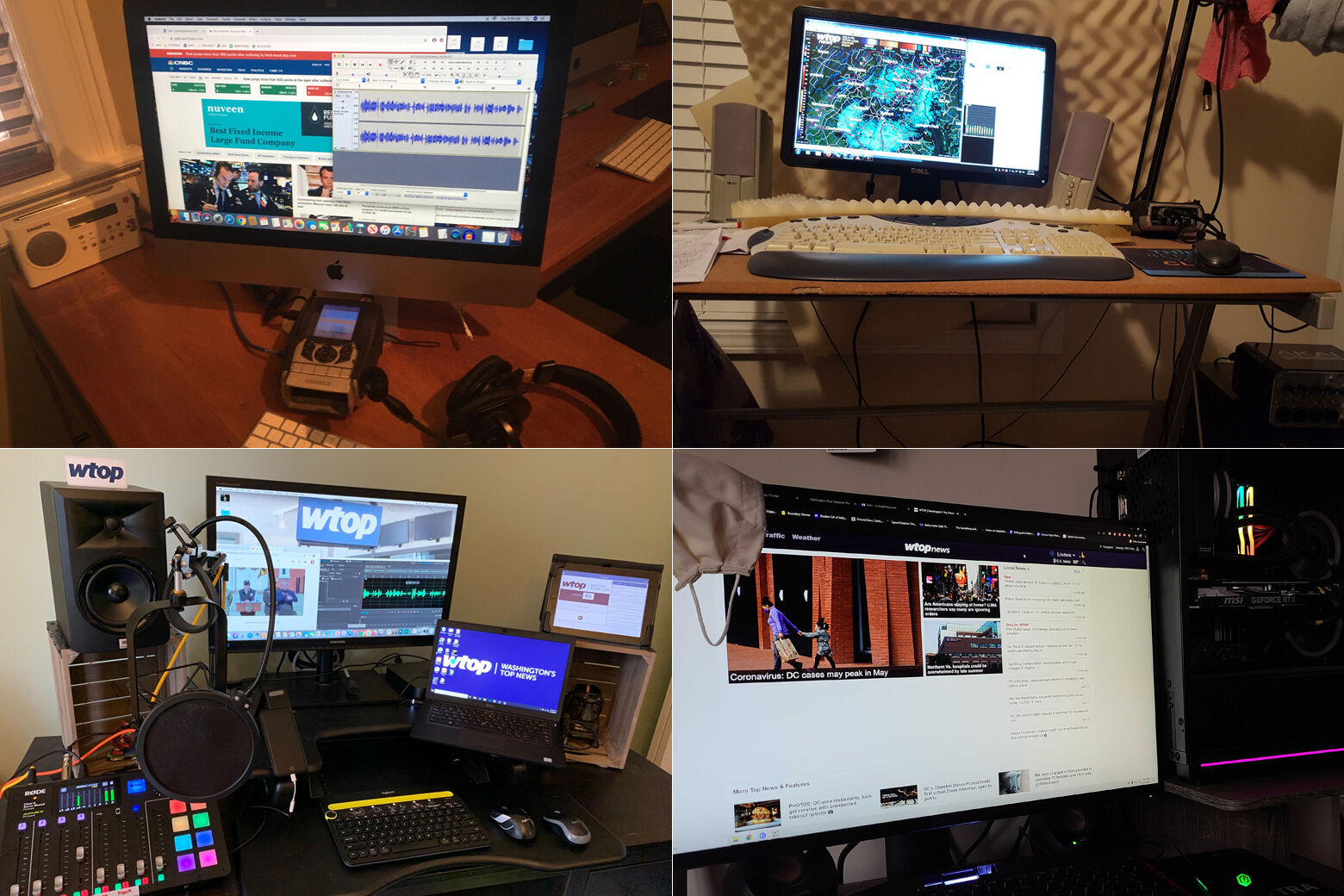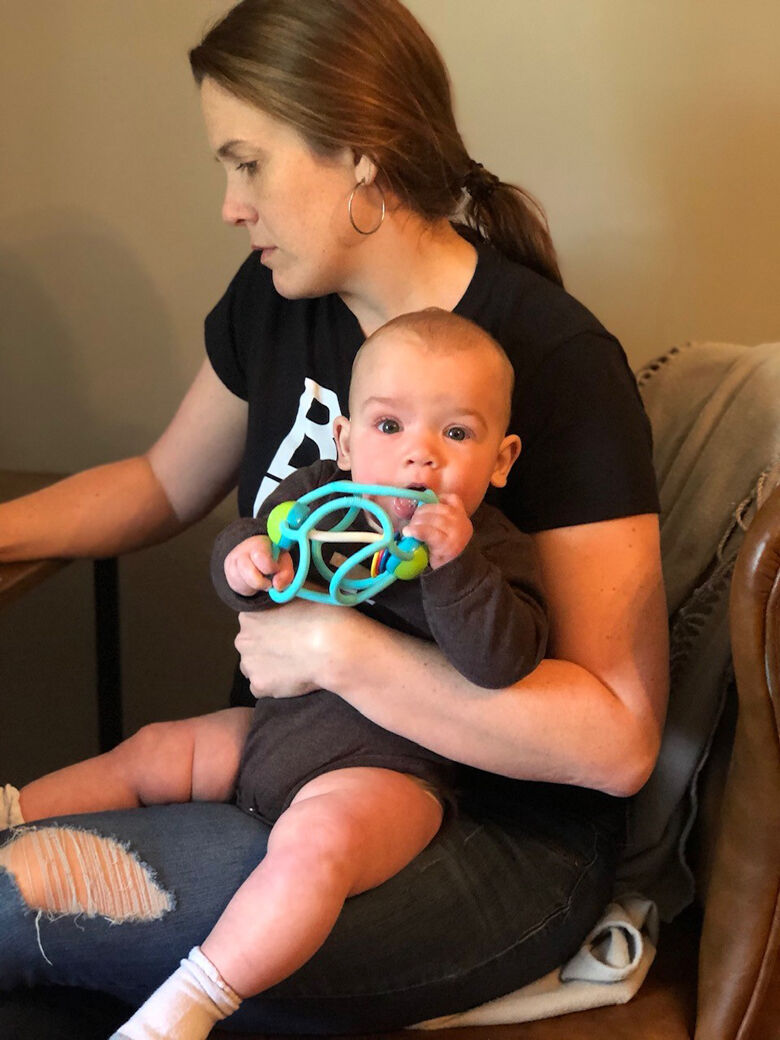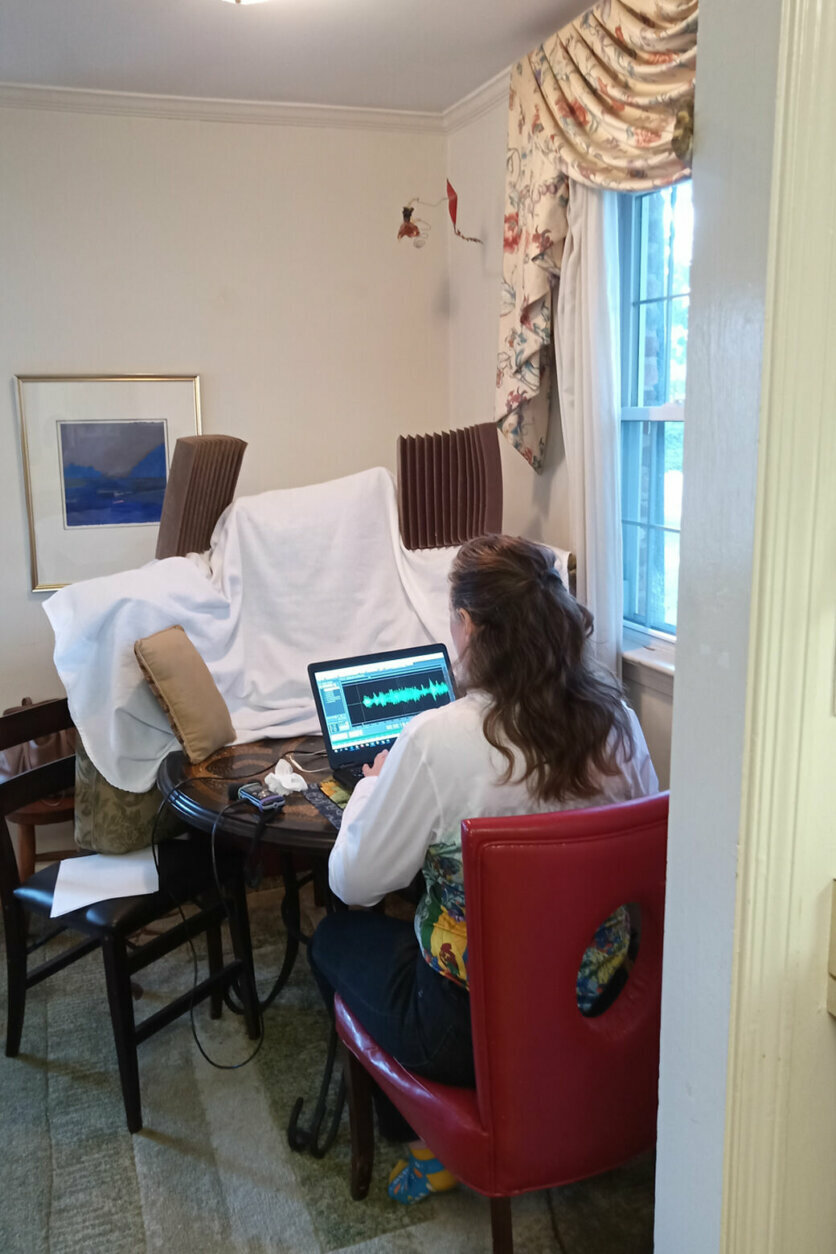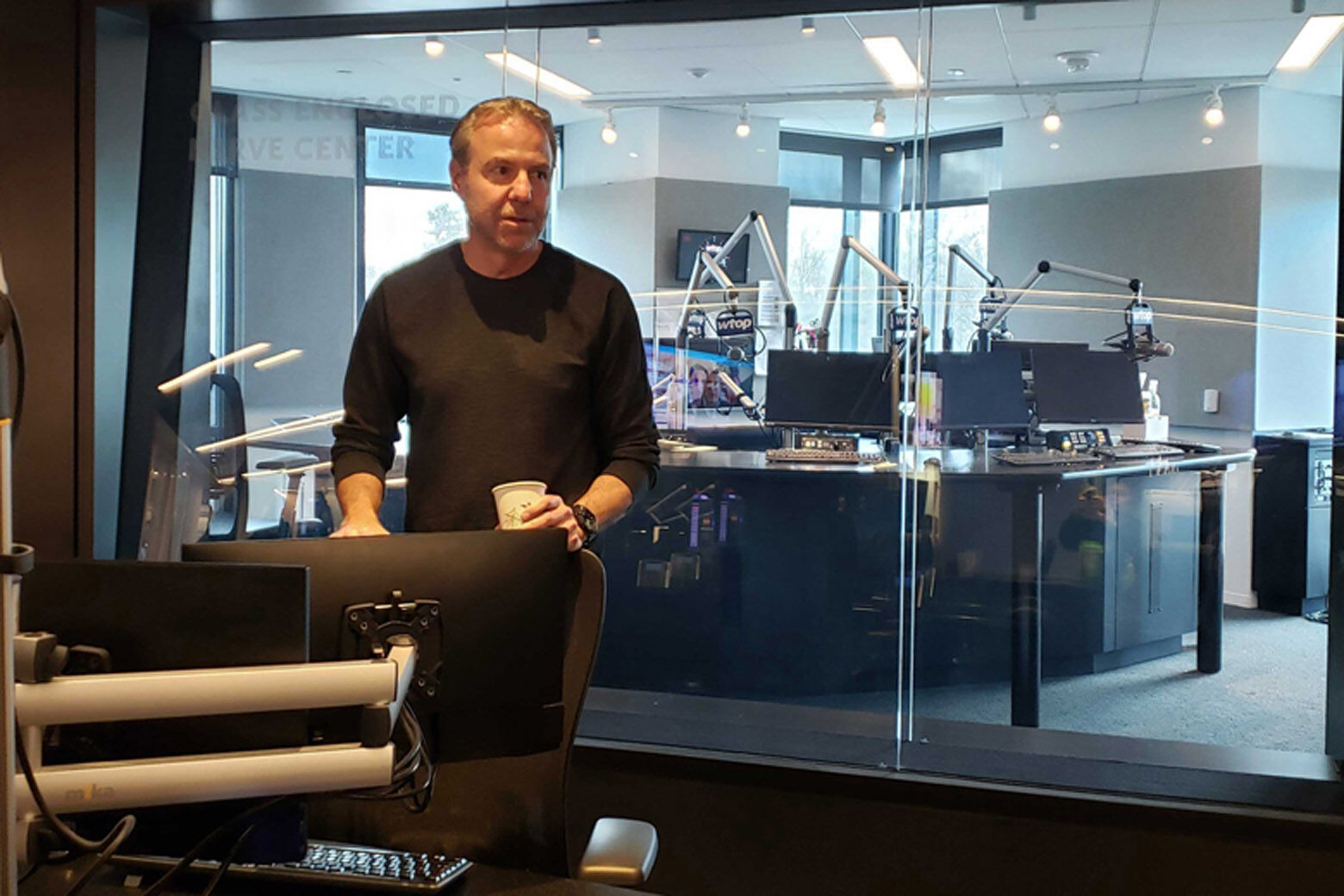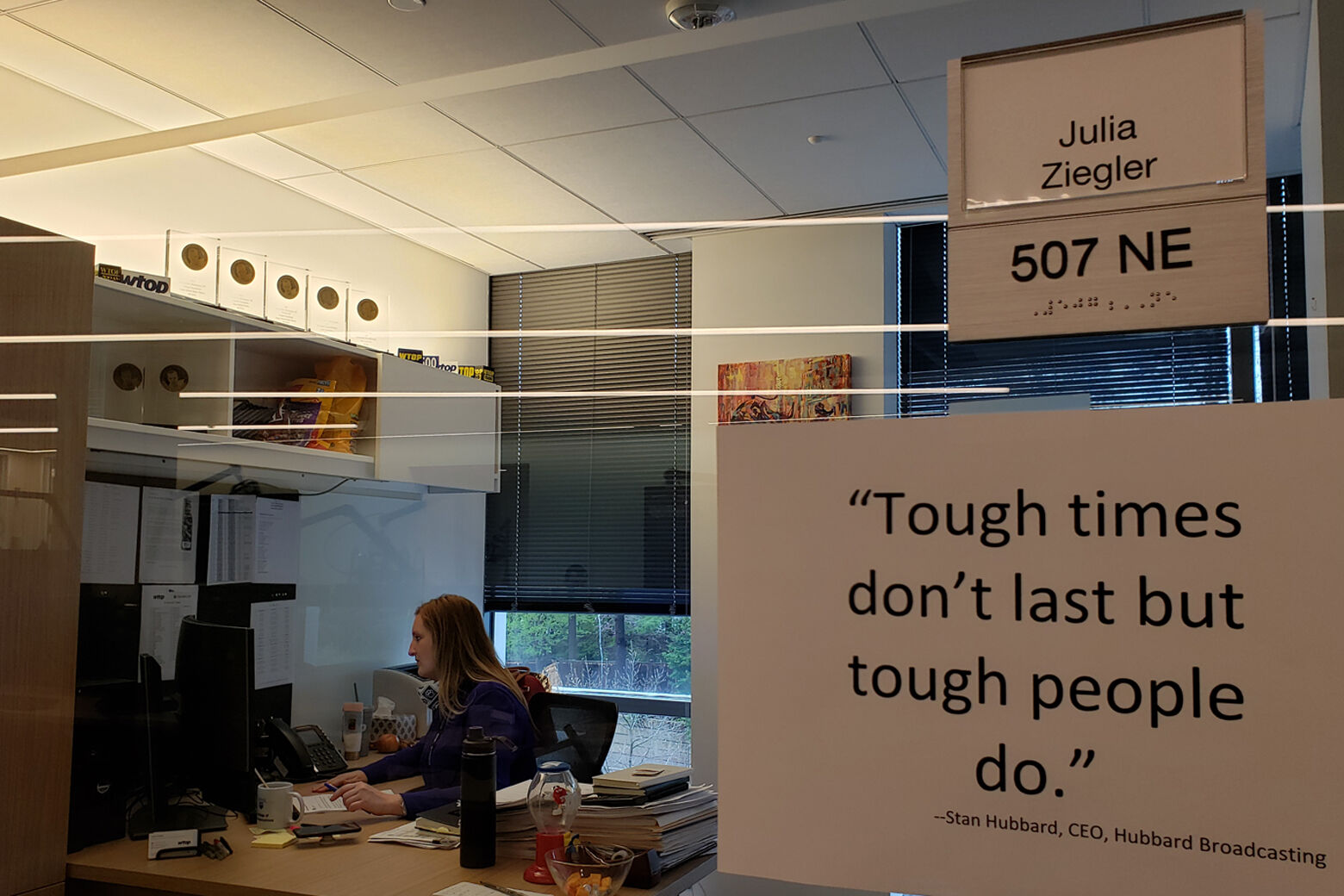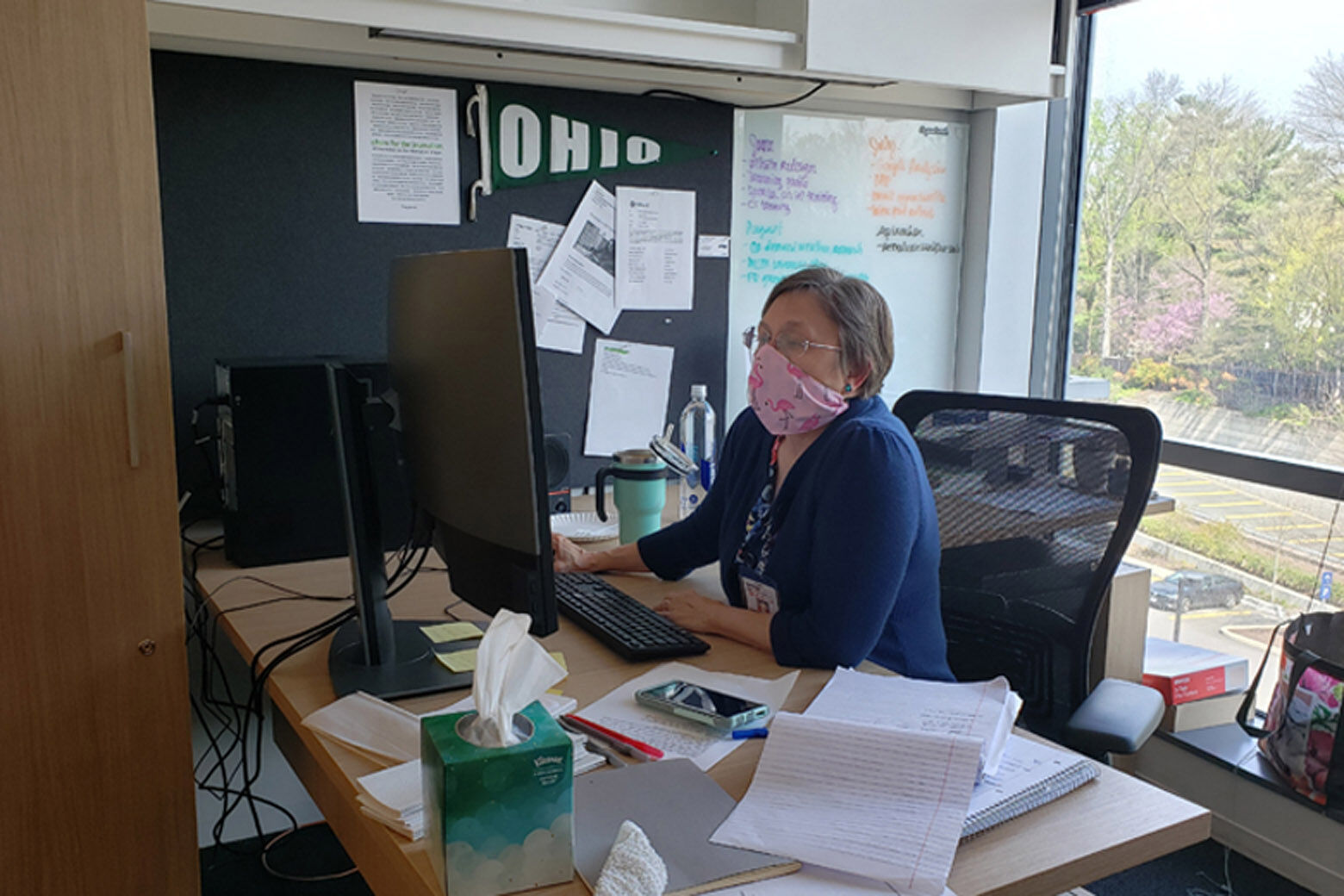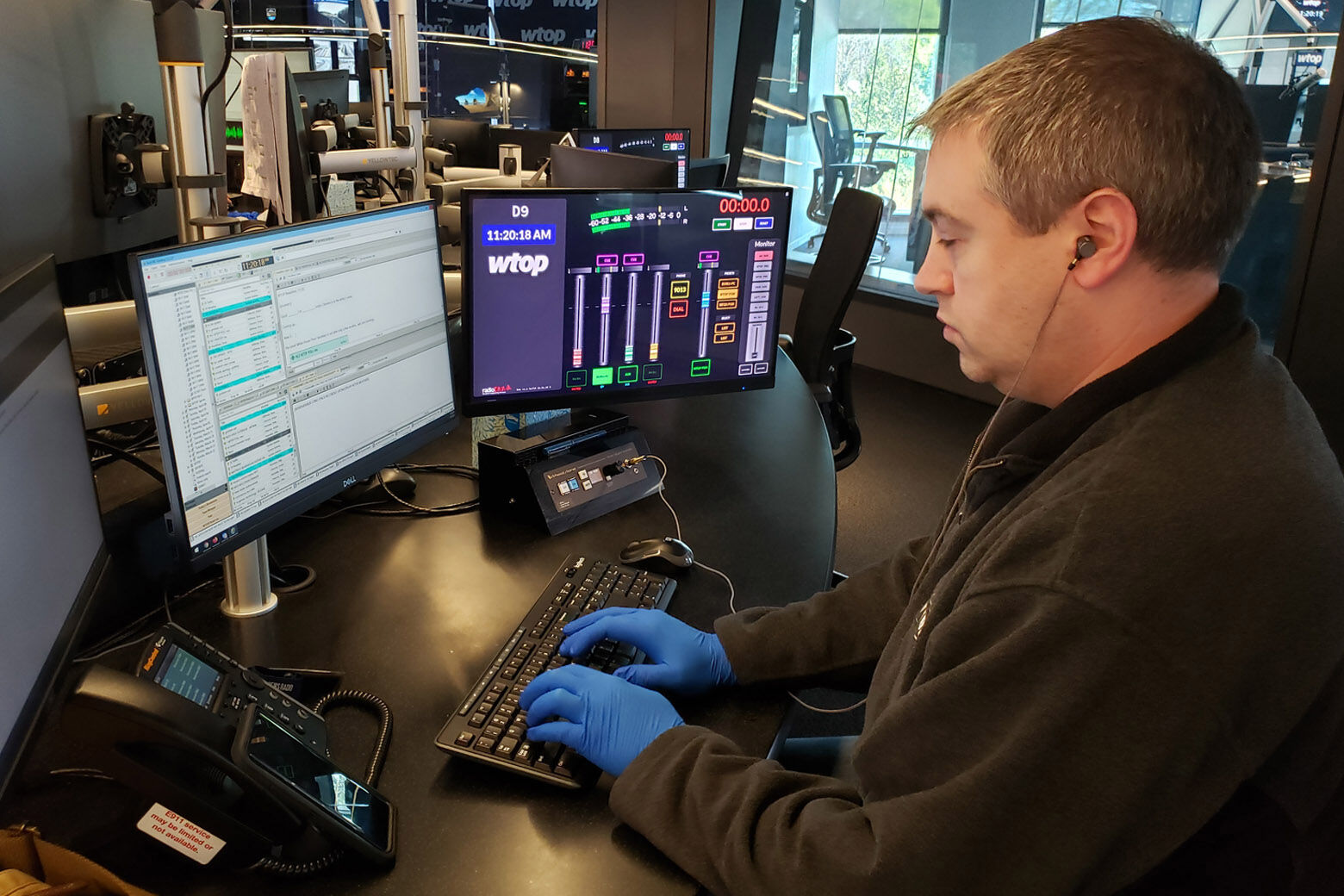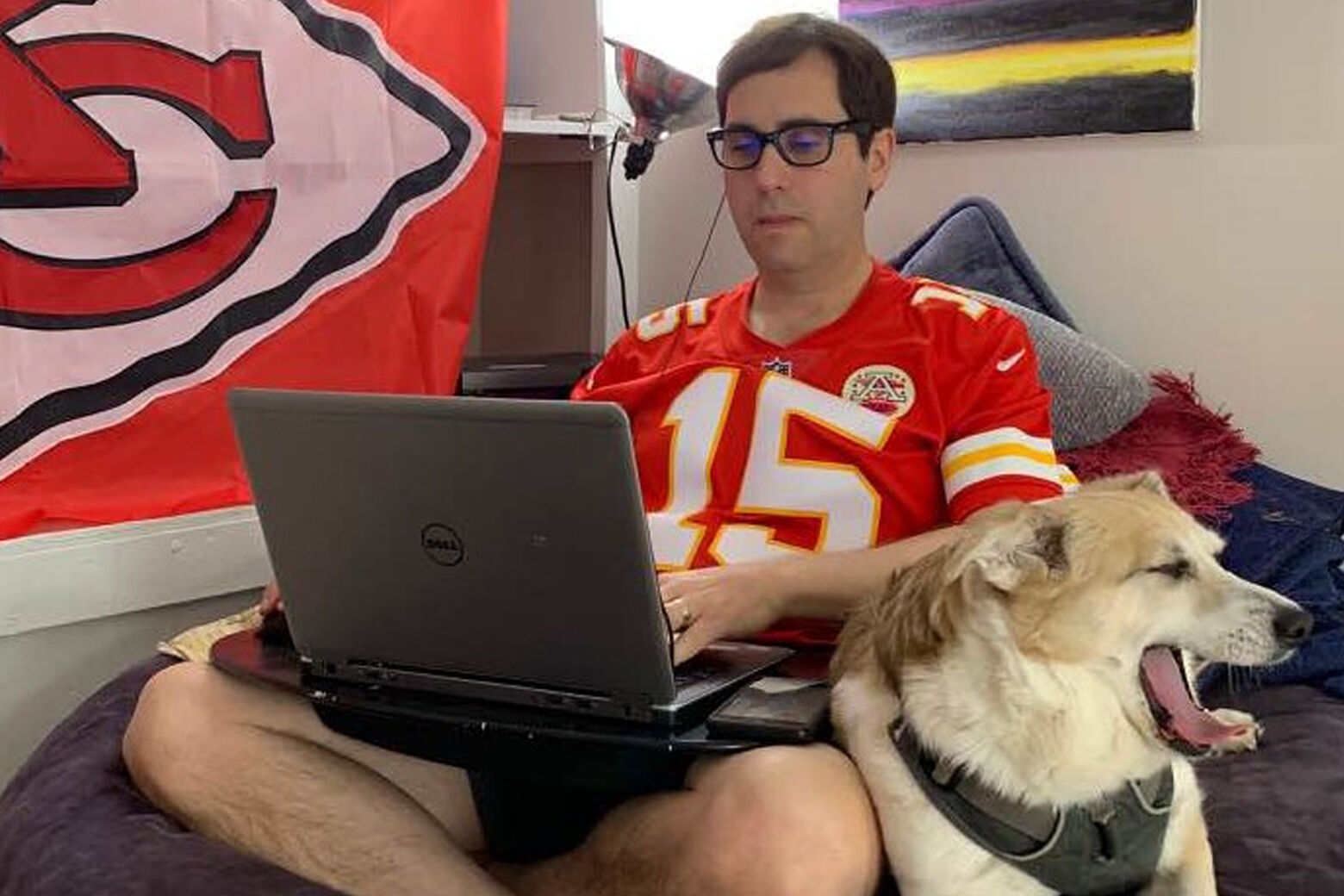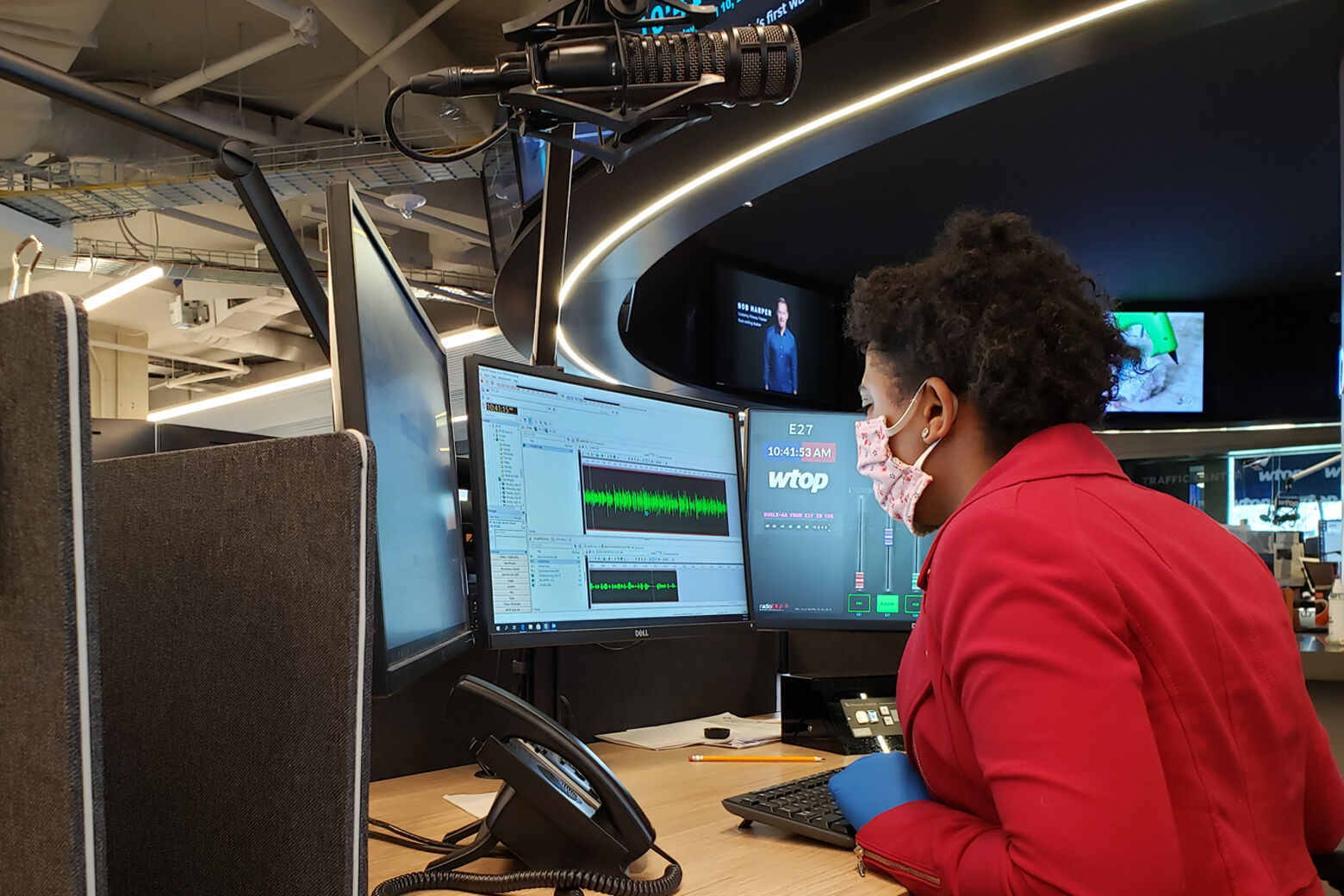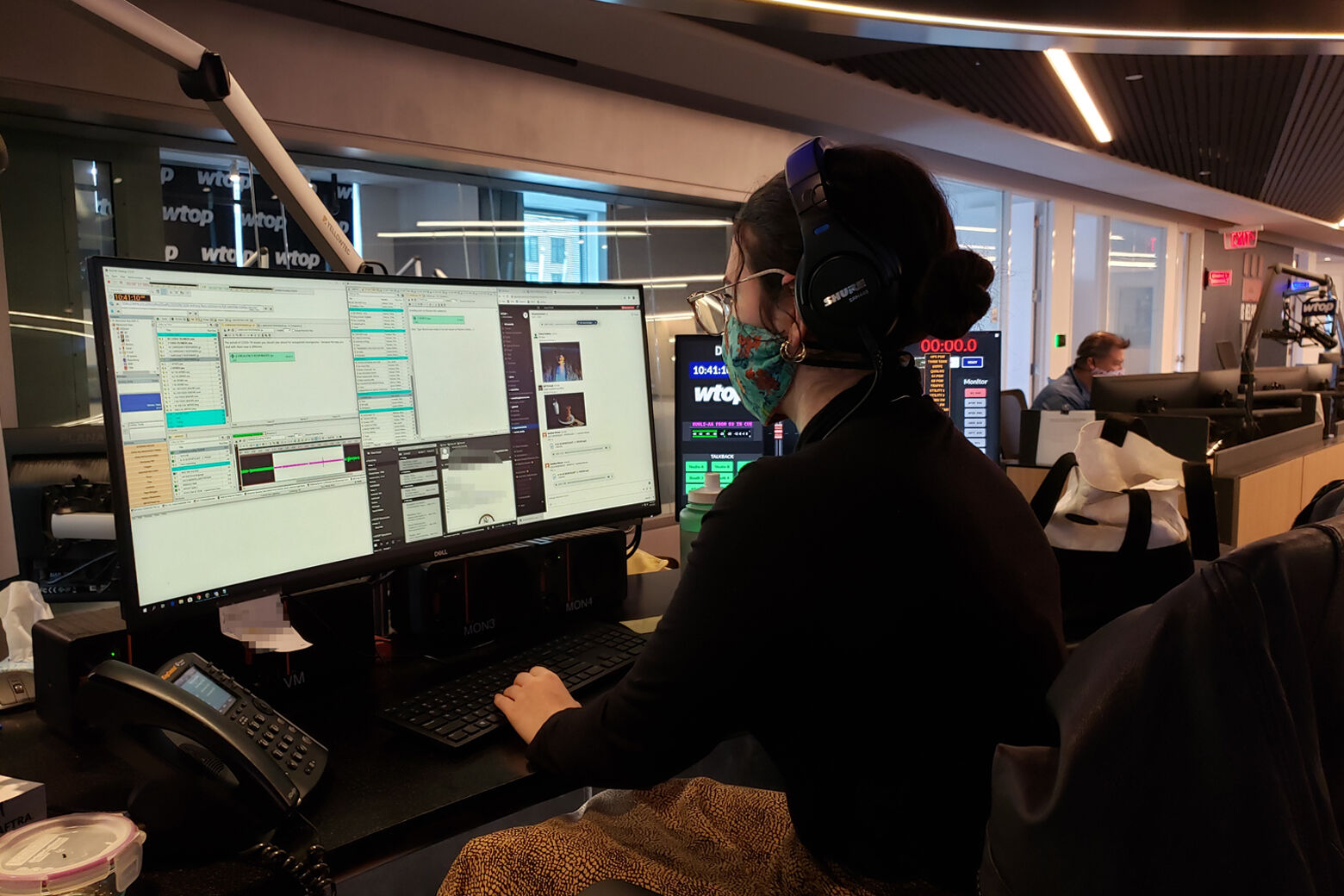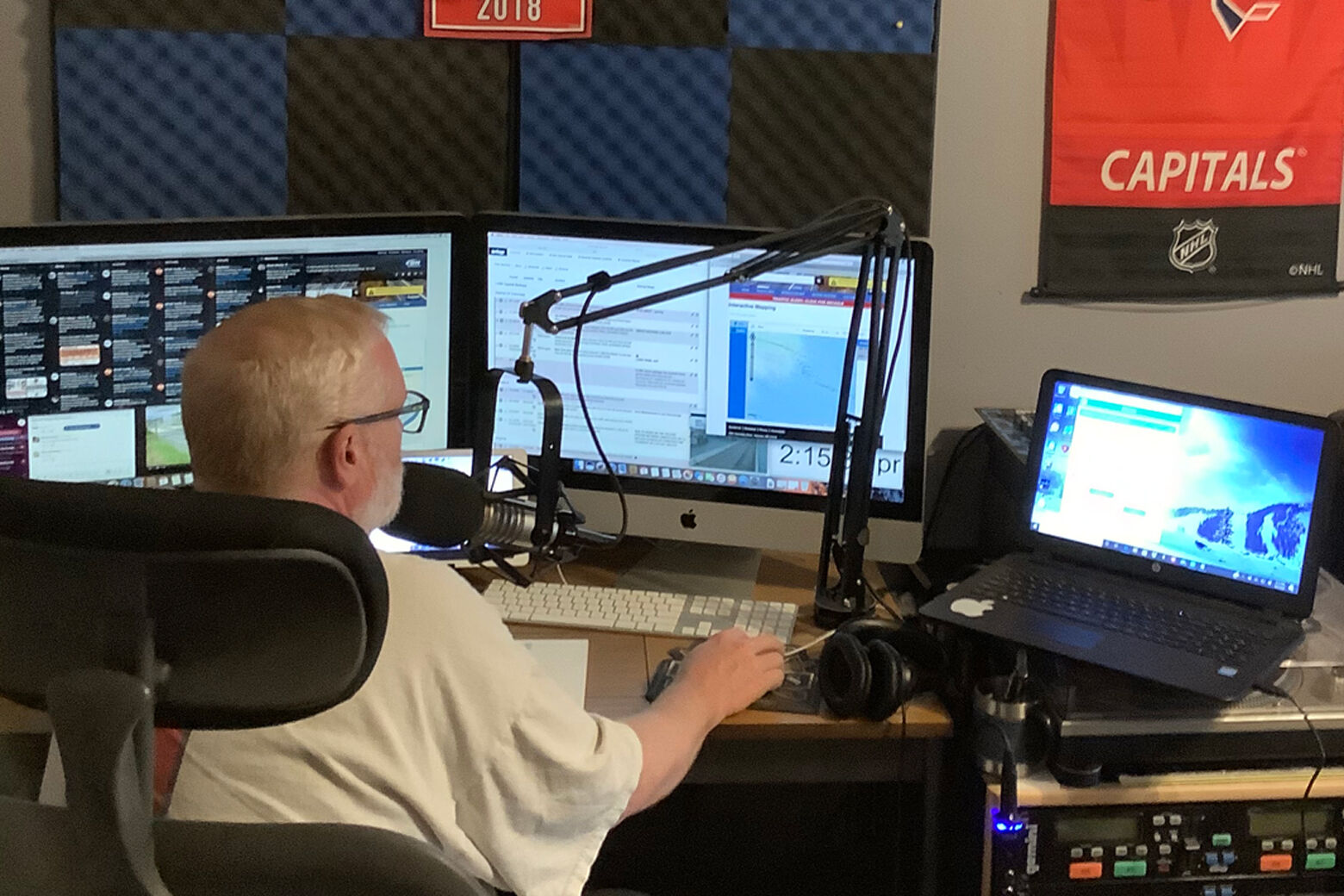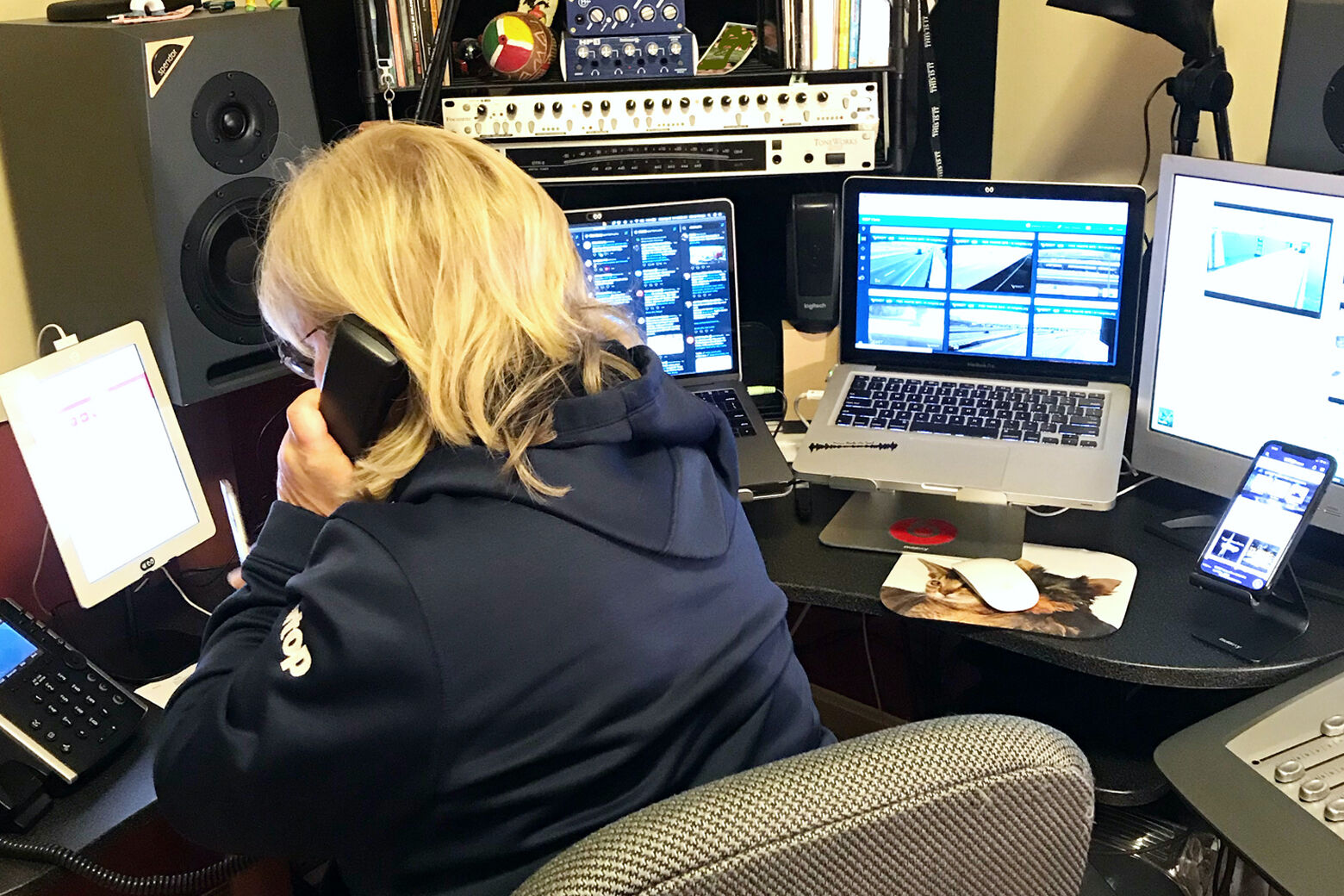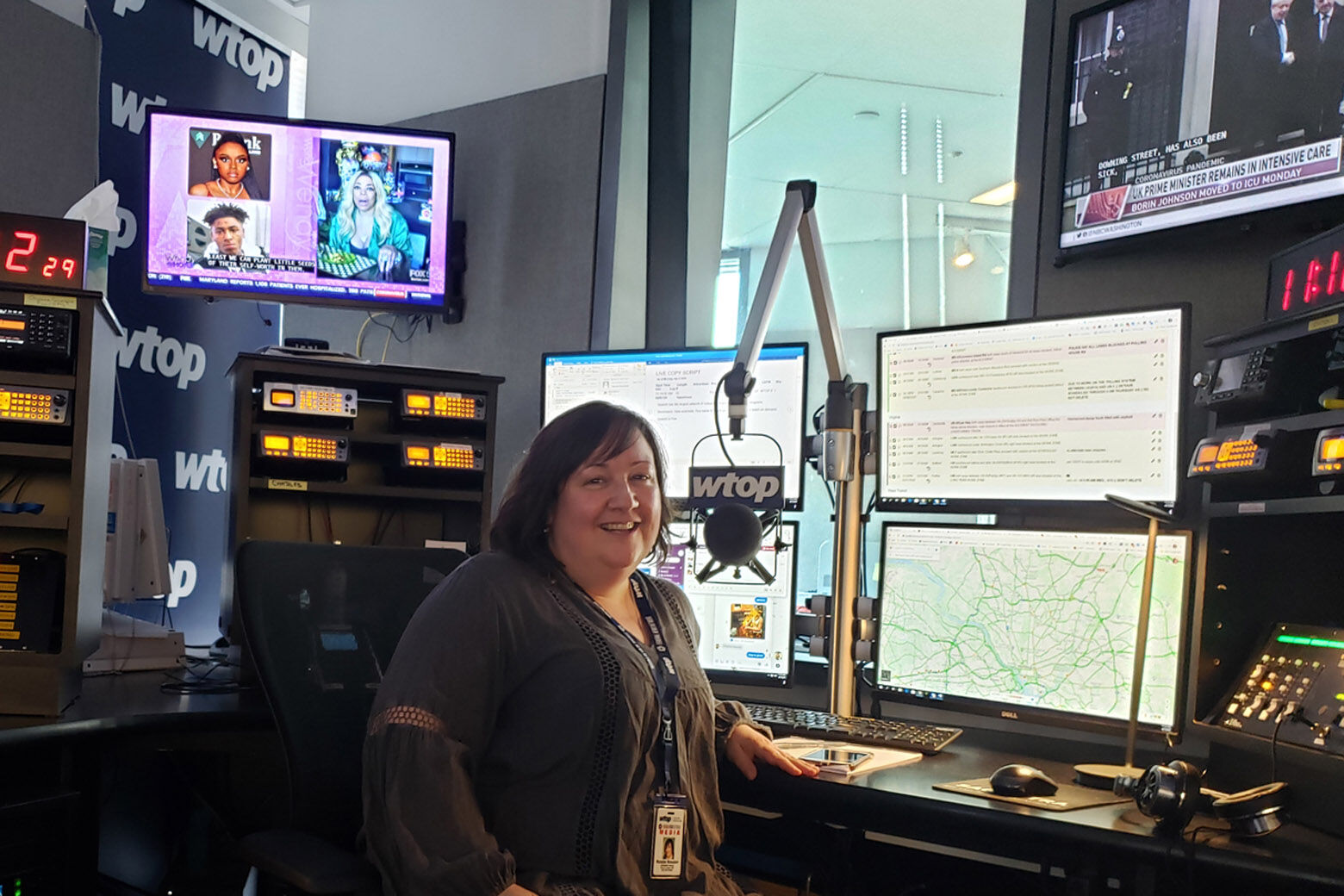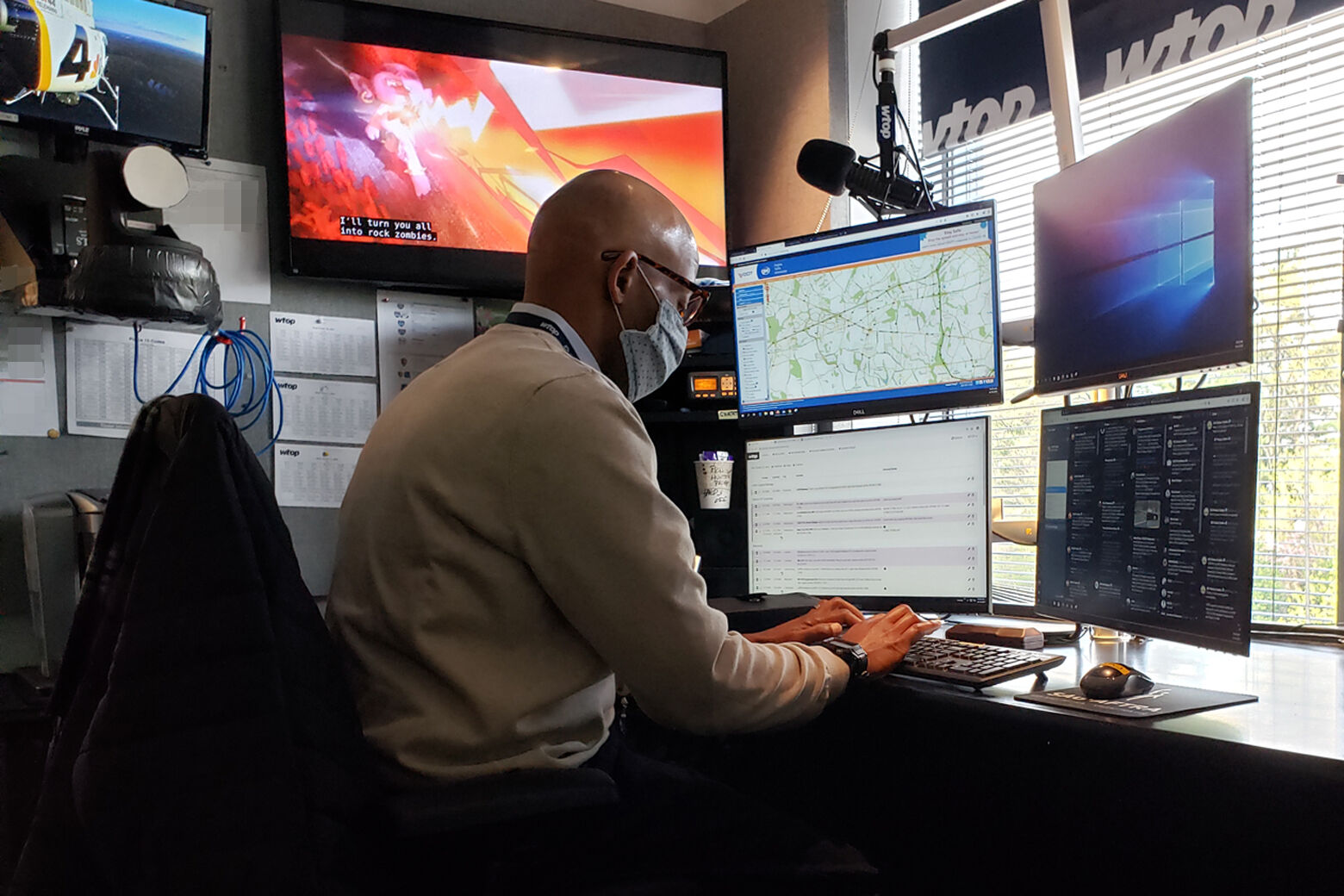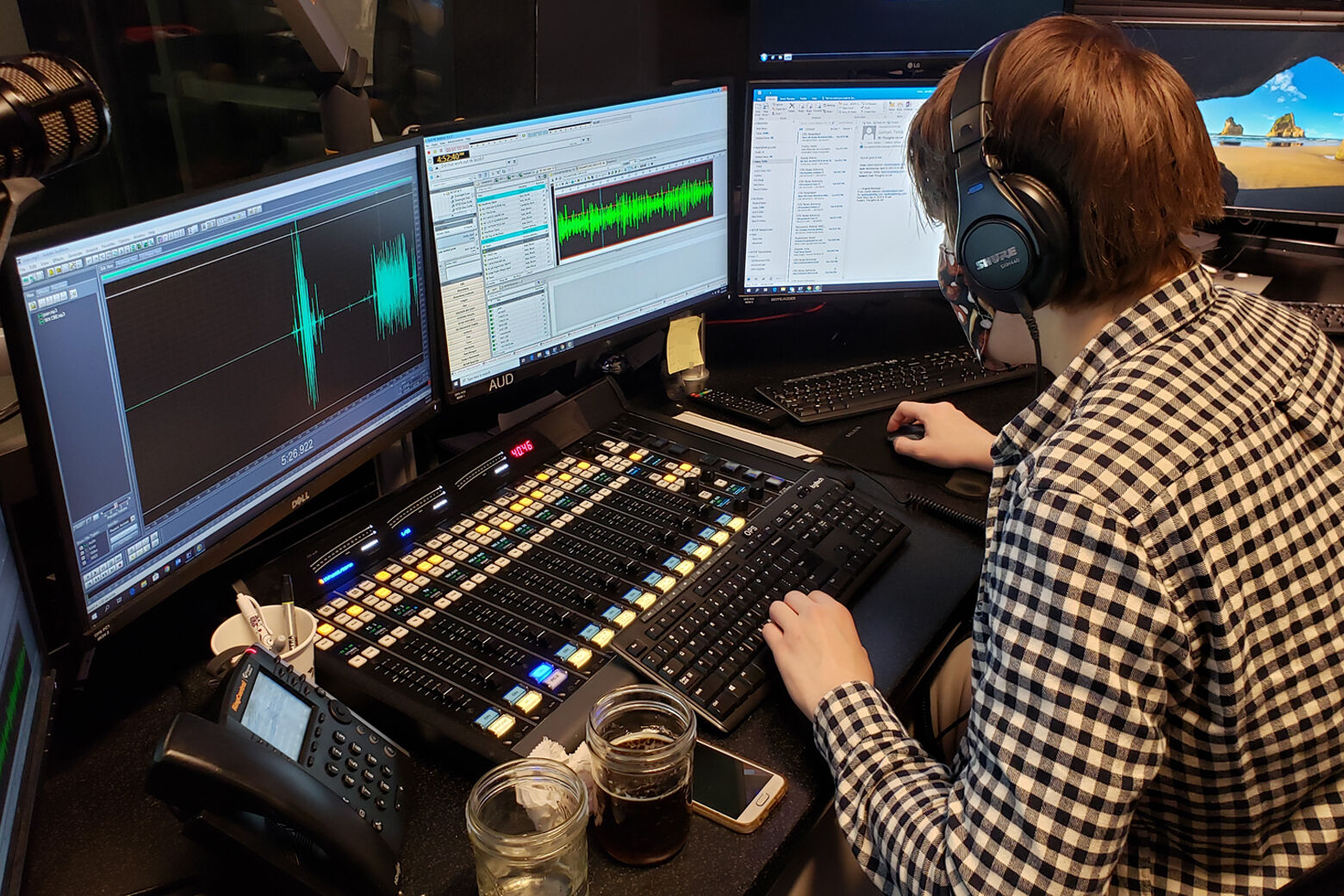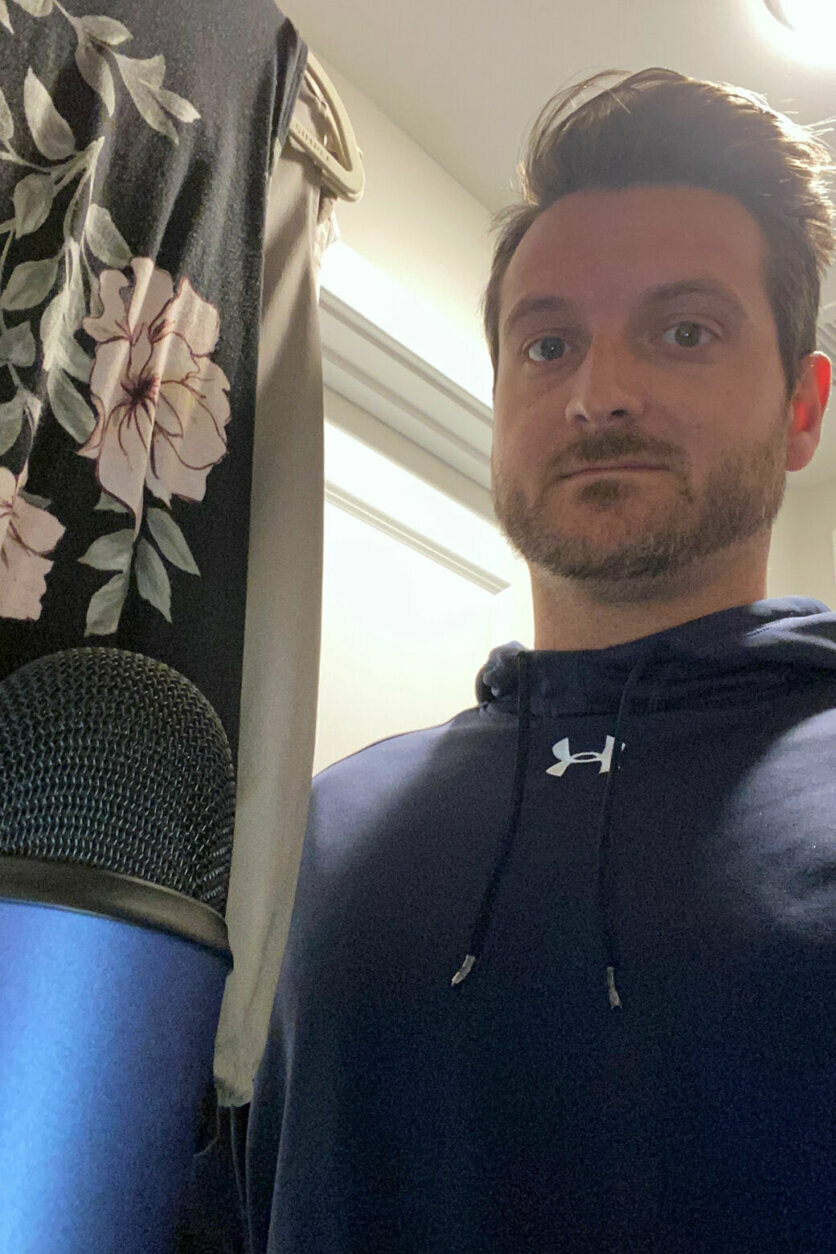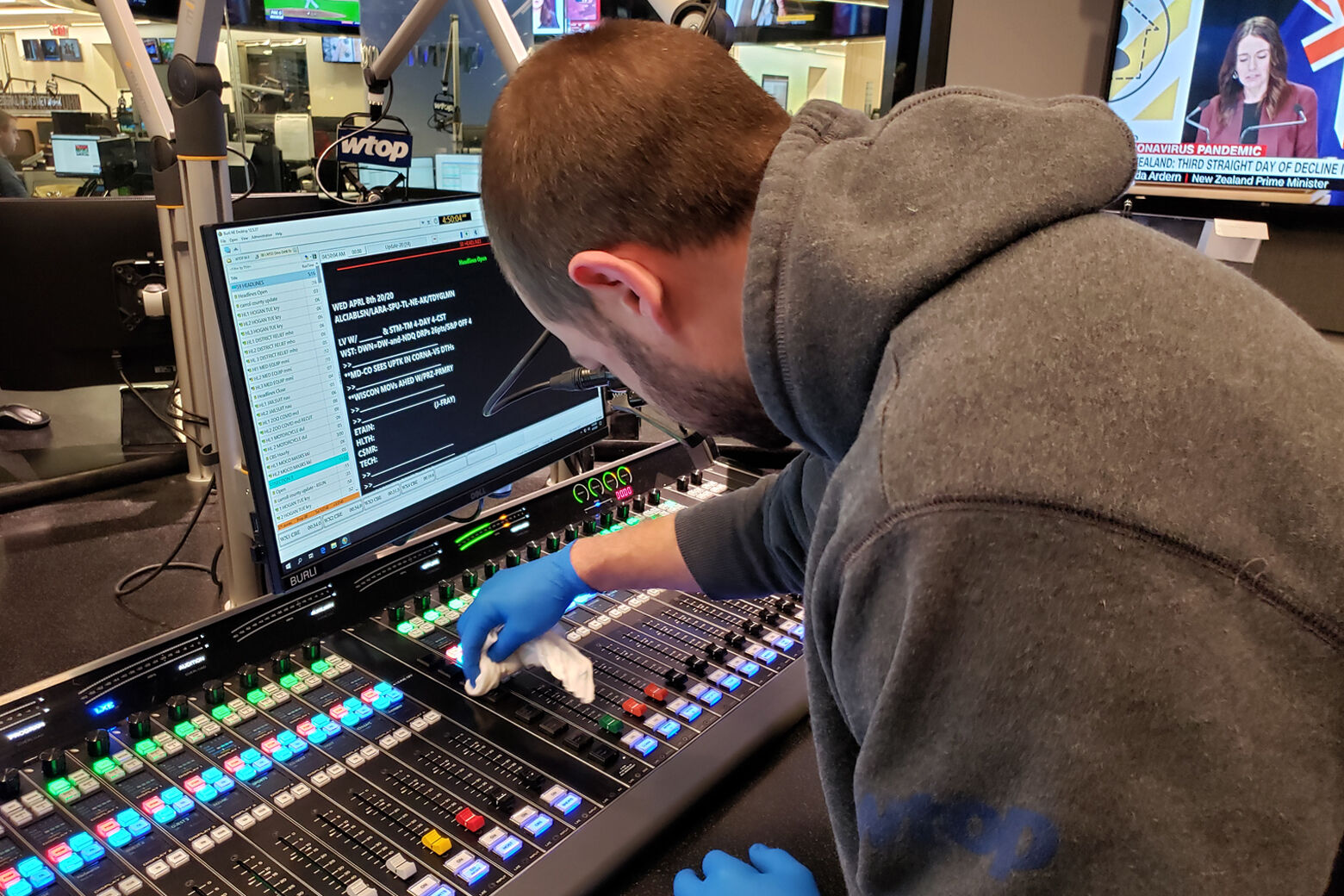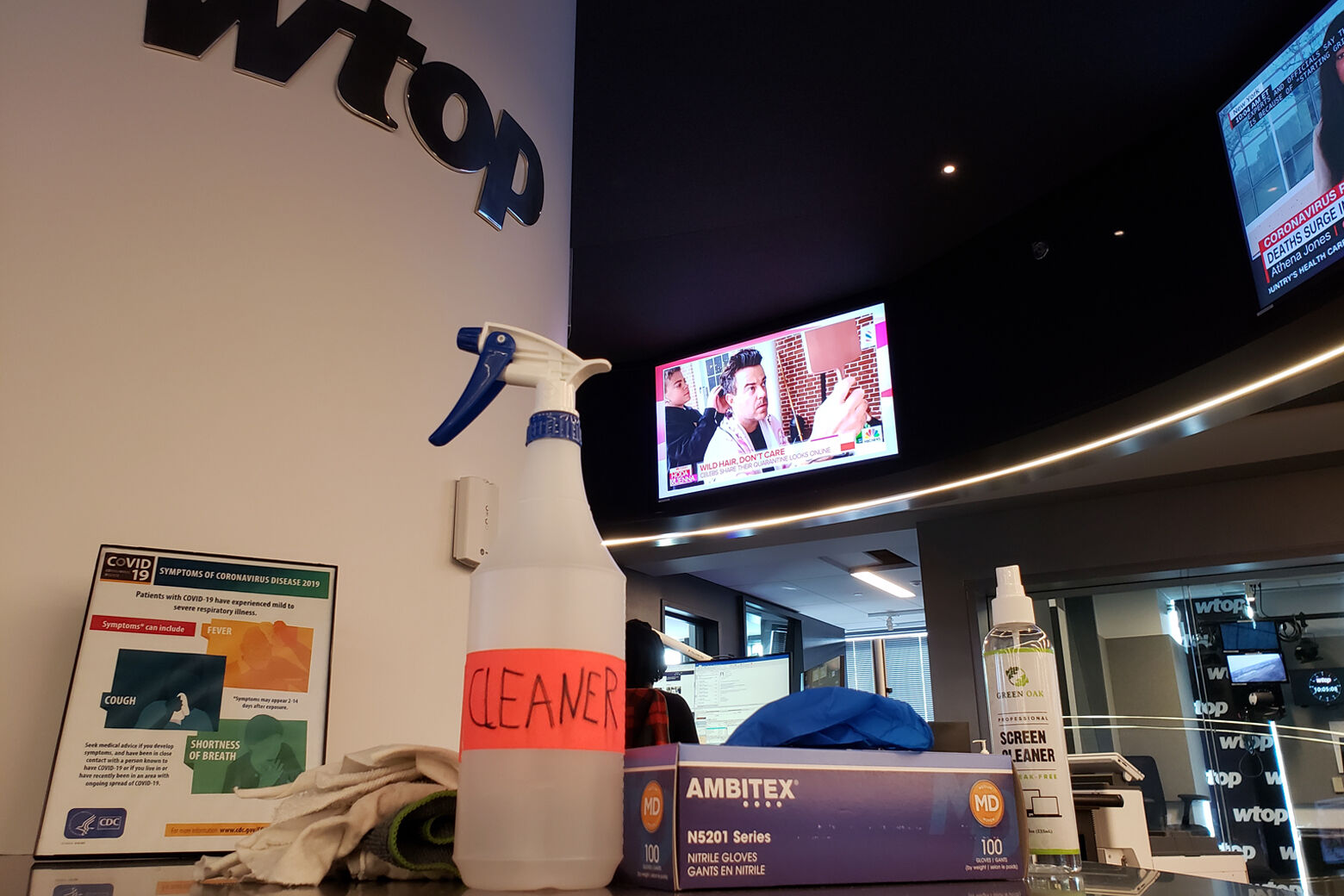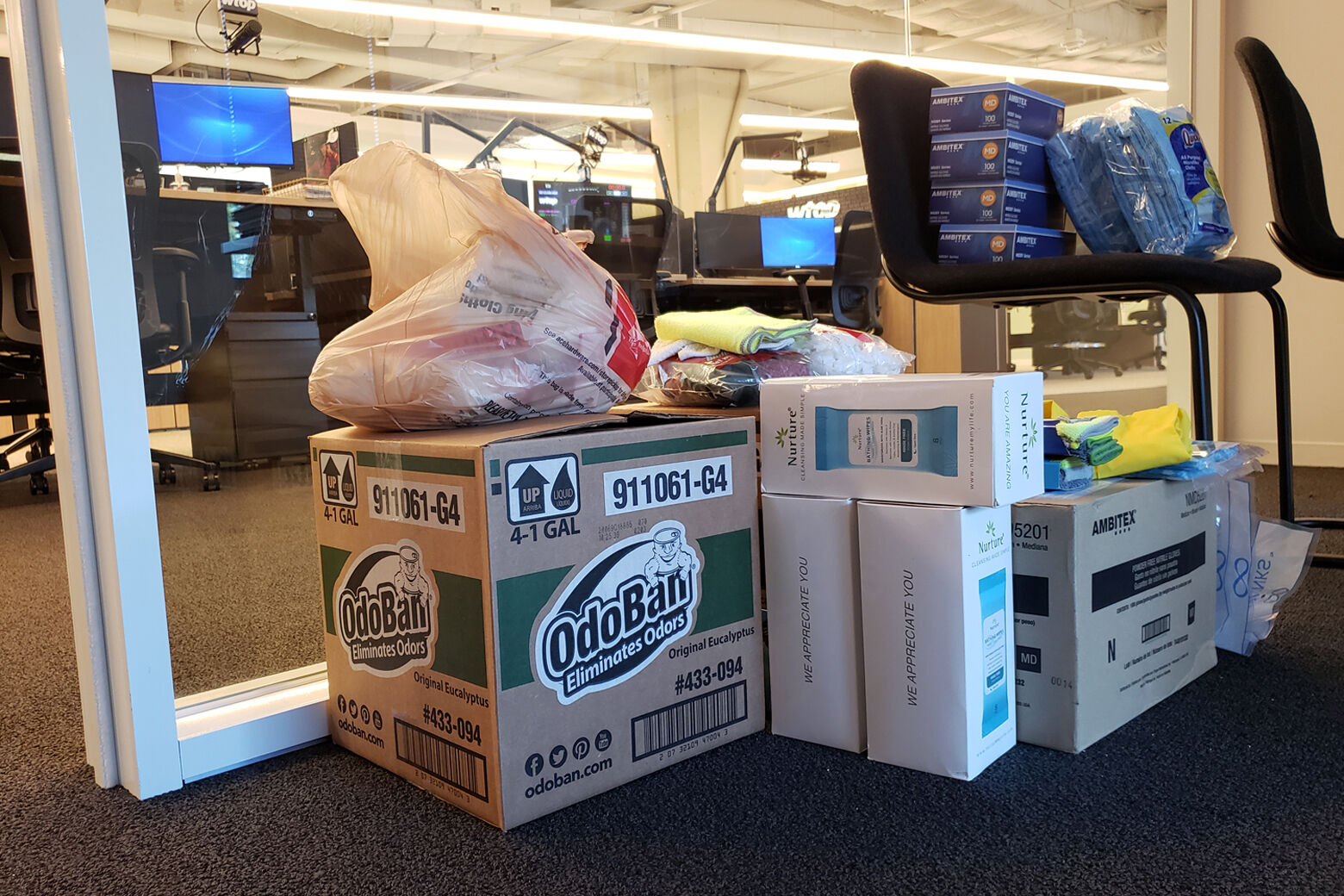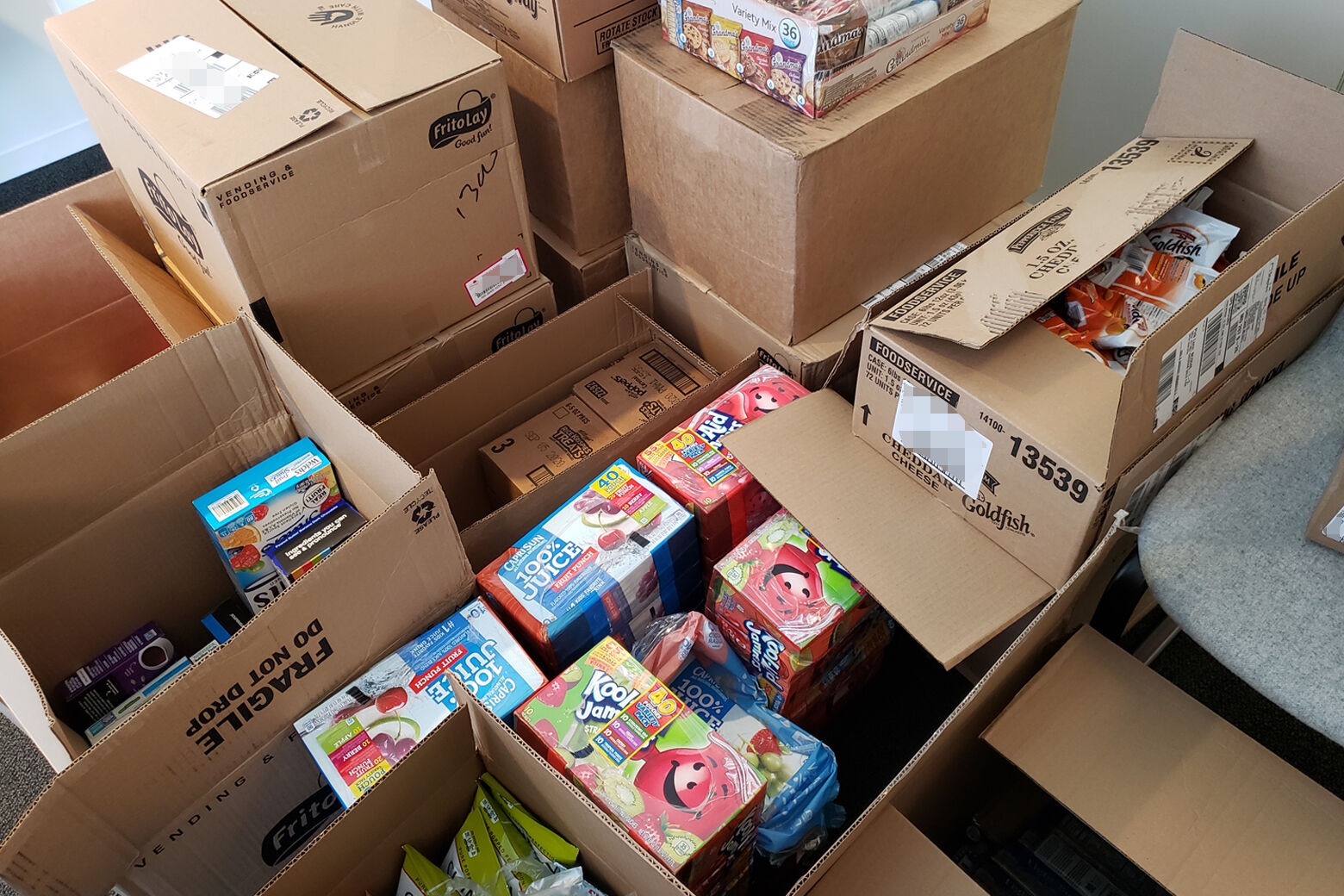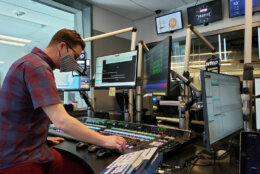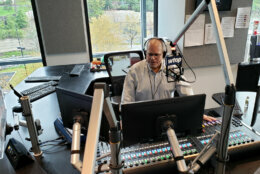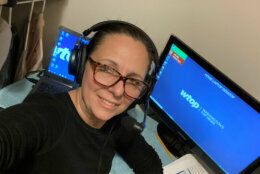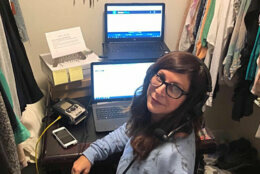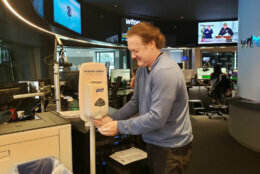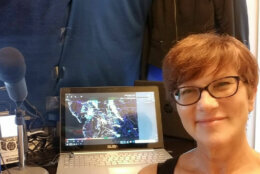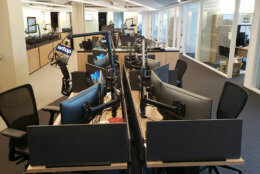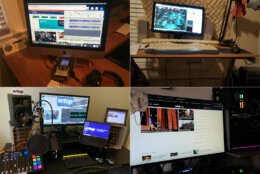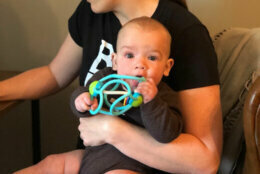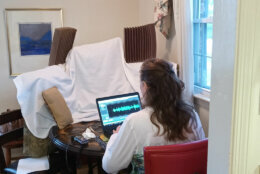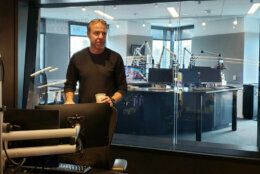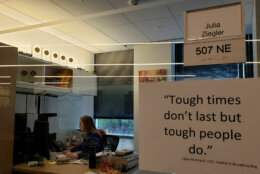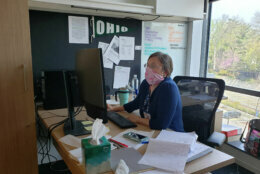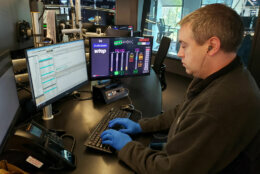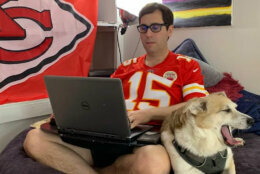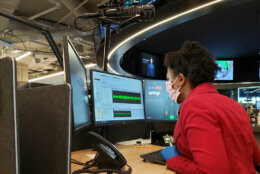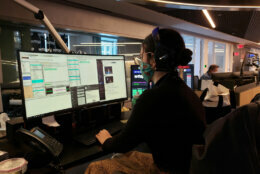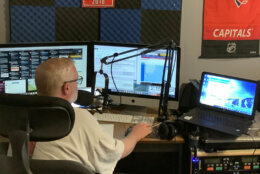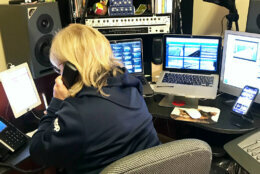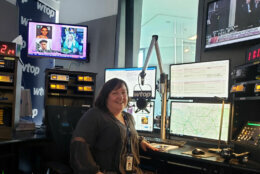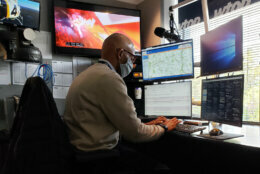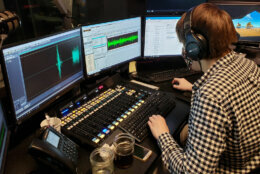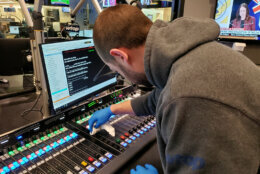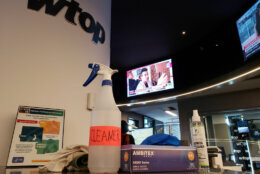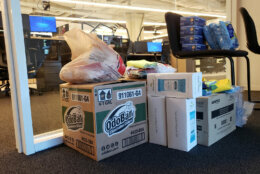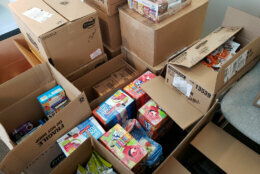You’ve probably been saying to yourself things have really changed in the last couple of months because of the coronavirus. At WTOP, they certainly have.
A little over two months ago, WTOP celebrated one year in our new Maryland location. Like all great radio station events, there was food — lots of food. Two days of it — on the actual anniversary of the move, Feb. 2, then the next day.
People from every department lined up, served themselves loads of pasta and pizza and gathered like a family. Food is one of the ways we at WTOP show our affection for each other, whether it’s a big meal or Oreo Friday.
Later in the month, on Feb. 26, the entire staff stood almost shoulder to shoulder as we recognized 18 staffers celebrating key anniversaries that totaled 275 years of service. (Did you know that Shawn Anderson, Mitchell Miller and Dave Johnson have each been here 25 years?)
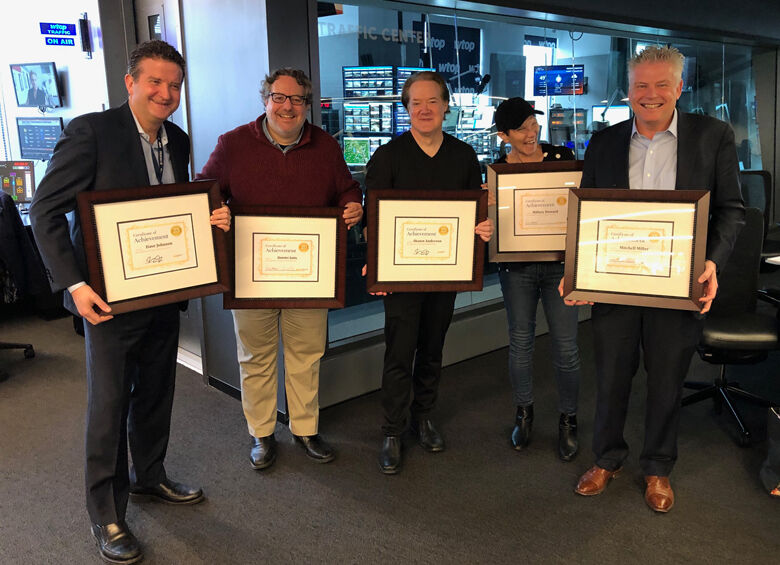
None of us could have predicted then that in just a few weeks time our work environment as we have known it for years would change completely.
We would not only have to focus on gathering news — some of the biggest news of a lifetime — but we also would have to worry about doing it safely during a pandemic. Coronavirus is unlike anything most of us have ever encountered. You can’t see it. But it can certainly touch you, as we’re all finding out.
The more dangerous the threat from coronavirus has became, the more life at WTOP has changed in order to keep our team safe. All of our protocols have changed — and so has how we bring you the news.
BEHIND THE CURTAIN
Below is a little peek behind the curtain at how life at WTOP has changed in the past month.
First it was the little things. As coronavirus was becoming a bigger threat in the D.C. area, WTOP began taking precautions just like other businesses were doing.
Memos outlined the best way to wash your hands. Additional hand sanitizer stations were installed. We banned baked goods and any other food that wasn’t individually wrapped. We started social distancing. These measures would only be the start.
In an email to staff on March 6, General Manager Joel Oxley outlined a host of things that had been done (replacing HVAC filters, ordering individual microphone covers for anchors, etc.) and a list of other ideas under consideration, including physically distancing ourselves from each other in the newsroom and not sharing desk space — a very common practice in newsrooms.
OPTION TO WORK FROM HOME
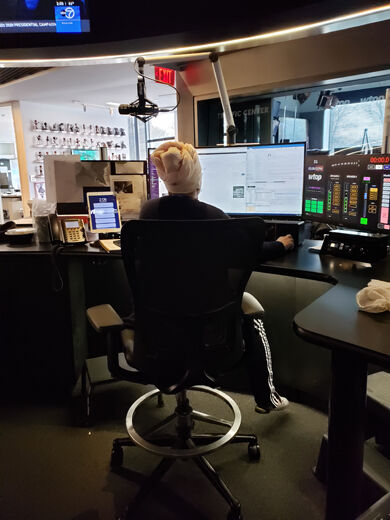
“Work from home accommodations are available to all staff who are able to do their jobs from home. Let your manager know if you feel you need more flexibility,” Oxley wrote in his March 6 memo.
Newsroom people are not ones who typically want to work from home. They are typically the types of people who have to be told to go home when they are sick. They come to work 365 days a year because it’s what they do.
They are people who are used to covering dangerous events: Flash floods. Tornadoes. Snow storms. The derecho. The 9/11 terror attack. The Navy Yard mass shooting. World Bank protests. The Freddie Gray riots. The D.C. snipers. You get the idea.
It’s expected that reporters will be on the scene of news events, that writers will update copy, that editors will give directions and that anchors will tell you what’s happening.
Nobody in the newsroom took Oxley up on his offer.
We continued to work in the big, open WTOP newsroom from desks that are grouped together. Reporters sit with reporters. Editors sit with editors. The digital staff sits with the digital staff. We’re next to each other — collaborating, joking and grumbling. We butt into each other’s conversations and talk across the room to each other.
We know that when a shift ends, the next shift will sit in the same seats we just left.
EVERYTHING CHANGES
But five days after Oxley’s email offering to let people work from home, everything changed.
“In order to be proactive, we are going to ask many of you to work from home tomorrow. We are doing a test so we can determine what people need in case working from home/remotely becomes a long-term SOP,” Oxley wrote in his March 11 email to staff.
Work from home. WTOP had never done it before.
But on March 12, many of the nearly 200 people who work for WTOP and Federal News Radio would try it.
The sales, finance and marketing teams left the building. The reporters, sports folks and web staffers packed up and headed home.
WTOP management made this decision the day D.C’s mayor declared a public health emergency, but before area school systems changed their schedules.
The day of WTOP’s first test run from home, Maryland would announce its first school closures for the rest of March. Those would later be extended into April and May.

THIS WOULDN’T BE A ONE-DAY EVENT
We didn’t know it then, but that work-at-home test run would turn into something much bigger and much more long term for WTOP staffers.
“Working from home — this is something we’ve never done for days and days and weeks and weeks at a time,” said Julia Ziegler, WTOP’s Director of News and Programming. “The No. 1 priority is keeping people safe. People come first.”
A lot of people pulled a lot of long hours to make working from home a reality for the WTOP newsroom. The IT team and management quickly started deploying laptops and other equipment that would be needed to work from home.
For the reporters, sports guys and digital staff, it wasn’t that hard — just different. Many reporters and the sports folks already had the equipment to broadcast from anywhere. The web staff always had the ability to work off site, but rarely did.
“We had most of the capabilities. We have always been able to work at home, but we didn’t have complete access to what we have in the office,” Ziegler said. “What we needed was the equipment.”
The big question mark would be how to get the anchors, the traffic team, the radio writers and the editors the needed equipment and access to work outside the building.
Anchors and traffic reporters would need remote access units, computers, software and microphones to allow them to broadcast at home, like the reporters do in the field.
And as the equipment came in, more people filtered out of the newsroom.
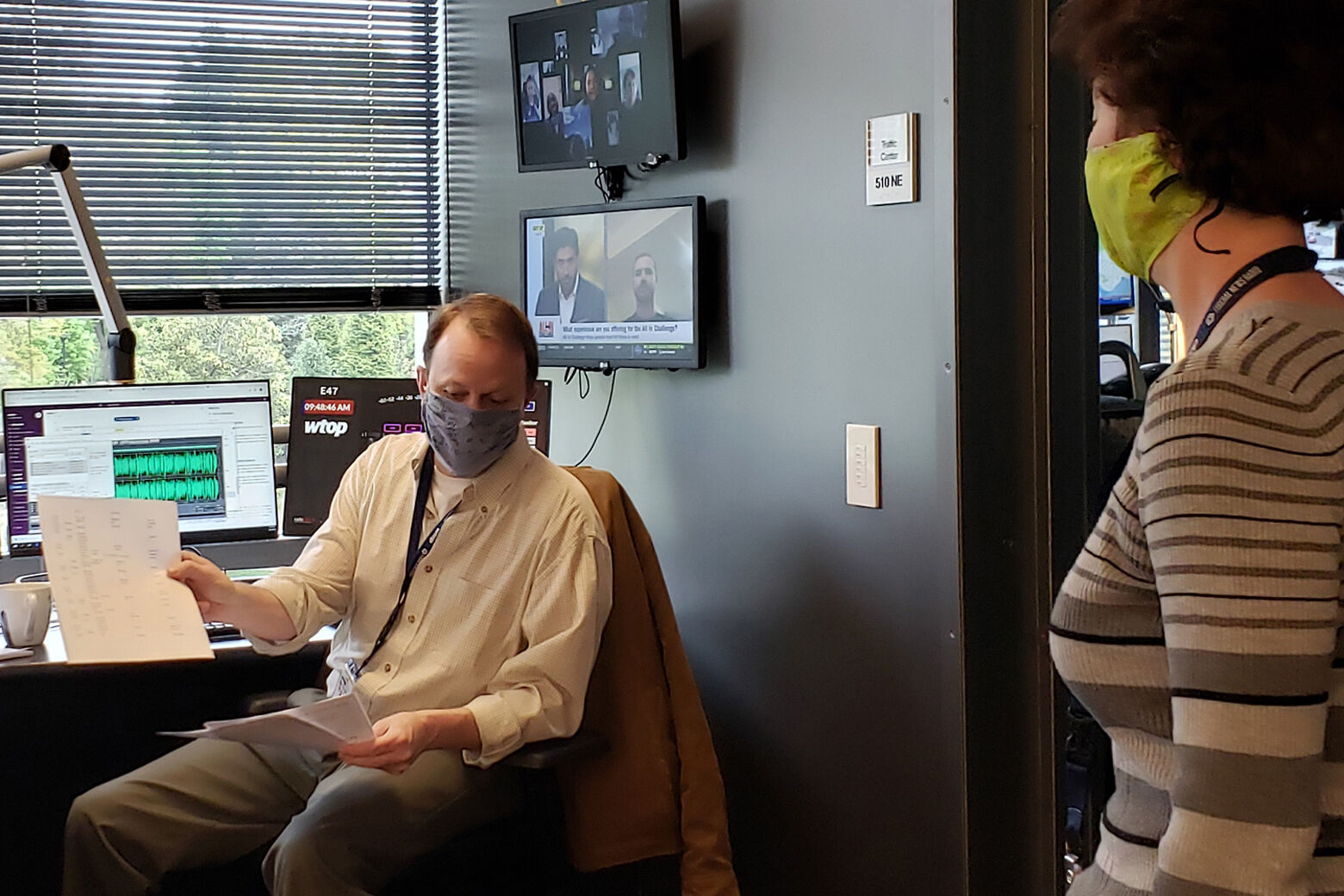
BREAKING UP TO STAY HEALTHY
But for those who were still working in the newsroom, more and more began to change as well.
WTOP made the decision to break up our anchor teams.
“Anchors typically work side-by-side in an enclosed studio for the four to five hours they are on the air. We decided for the safety of everyone involved, we could no longer allow them to do that,” Ziegler said.
And so, anchor teams were separated, with each broadcasting from a different studio. For example, people tuning into AM Drive, would hear Bruce Alan during one hour and Joan Jones during the next.
Some engineering had to be done to turn what is typically our “back-up studio” into one that had all of the capabilities as our main studio. (Previously, that studio was used for interviews with guests, but visitors had also been banned on the floor.)
At the same time, a vigorous cleaning regiment was put in place for the studios. No anchor can use either studio before it has been officially cleaned with a disinfectant we have all come to affectionately call the “corona cleaner.” It’s also used throughout the newsroom.
All staffers are asked to clean their workstations with it when they first arrive and when they leave for the day.

NEXT BIG LEAP
On Saturday, March 21, WTOP took another big leap. We wanted to test whether an anchor could broadcast from home. Would it sound the same? What issues would we encounter? Would the listener know the anchor was not actually inside the “Glass-Enclosed Nerve Center?”
After outfitting anchor Mike Murillo with all the equipment, technology and training he would need, it was go time.
WTOP had a backup plan and an anchor ready back at the studio in case something went wrong at Murillo’s home, but he didn’t need it. Murillo has been anchoring from home every weekend since then.
What about everybody else? Could they pull off what Murillo, a techno-whiz, did? Maybe — if they had support back at the studio.

Anchors started modifying their homes and being equipped to “go live” from home.
Both Joan Jones and Debbie Feinstein modified their closets into studios. When you hear them each day now, they are sitting right next to their favorite sweaters and dresses giving you the latest lowdown on coronavirus. Mark Lewis is in his dining room. Howard is at her home.
Back at the WTOP studios, another anchor, editor or writer pushes the buttons to make sure you hear traffic, weather, live updates from reporters and our commercials.
There are other anchors who still come into the studios.
One of them is Shawn Anderson, who said the change has been a noticeable one.
“It took me a couple of weeks to get used to it. I’ve anchored alone before, but I’ve been working with a partner for a long time,” Anderson said.
He and Howard now spend a lot of time text messaging each other.
“We text each other to find out how each other is doing. I am looking forward to the day when we can get back together. We will celebrate,” Anderson said.
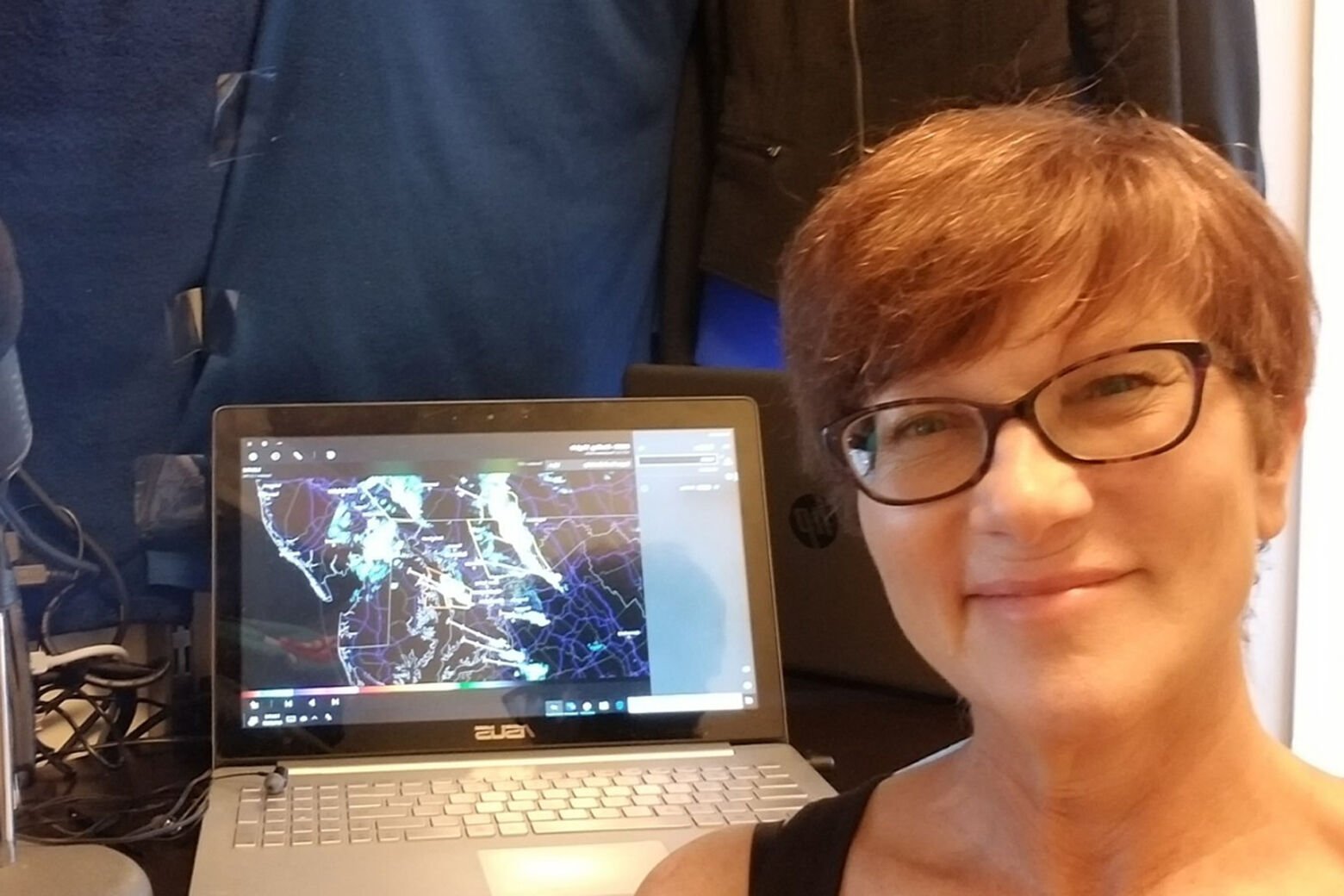
TRAFFIC — AT-HOME AND IN-HOUSE
Like the anchors, some of the traffic reporters now work from home too.
Before the pandemic, as many as three traffic reporters would work together in the WTOP Traffic Center at one time. Each traffic reporter is outfitted with four computer monitors displaying maps and traffic cameras around the region, as well as scanners from most police and fire jurisdictions.
And, they have what many of the traffic reporters still consider their biggest tool — phones. Calls to the Traffic Center still yield some of the best information that WTOP gets for its traffic reports.
Dave Dildine was one of the first traffic reporters to attempt working from home. While he does not have quite as many screens in his home setup, he does have a portable scanner by his side and access to those same cameras that he needs to get the job done.
WTOP Traffic Reporters Jack Taylor and Mary de Pompa are also both working from home now.
“It’s super cool to realize all my old equipment at home could allow me to do this!” Taylor writes in an email. But he admits he needs “interaction! Please personal interactions!”
He and de Pompa miss working as part of a team in one room where they would talk about different traffic incidents. De Pompa said together, with Reada Kessler, they would decipher the “best way to report on situations.”
“Our assessment is not as immediate as it can be within the Traffic Center but modern technology can almost get us there!” she said.
Something else that has changed — when you call the WTOP Traffic Center these days, the phone may be answered at someone’s home. Both Jerry Booth and Mary de Pompa were given equipment that allows them to take calls to the Traffic Center from their home studios.

WHO’S STILL HERE?
It’s now been over four weeks since WTOP GM Joel Oxley sent that initial email about the work from home “test.”
In addition to some anchors and some traffic reporters, there are a few other people who still come into the WTOP studios on a day-to-day basis.
The jobs of the radio editors and assistant editors (the folks who decide what goes on the air and when) are essential. When you hear, “Mike Jakaitis is at the Editor’s Desk,” or Teddy Gelman or Joslyn Chesson, they really are at the desk.
Chesson is the midday editor for Feinstein and Lewis. She used to look into the studio and give them a wave or a thumbs up when she needed to get their attention. With both anchors at home, communication has changed.
“I’m texting them a lot. I’m texting them more than my mother or my boyfriend!” Chesson said.

The people who are still coming into the newsroom are now wearing masks when in close proximity to others. WTOP had the masks made for employees.
“I had seen that a friend of mine, a former WTOP employee, was making masks for her sister who is a nurse. I reached out to her and asked her if she would be interested in making 50 for WTOP. She didn’t hesitate,” said Ziegler.
“My mom is also a great seamstress. She was making masks for our family and volunteered to make another 20 for the newsroom. We are so grateful to both of them.”
One of the biggest things Ziegler said she was worried about with everyone working out of the office was the communication between reporters that is so incredibly important.
“Verbal communication in a newsroom is vitally important. And we found ourselves in a situation where we were covering one of the biggest stories of our lives and that verbal communication was going to be in jeopardy with everyone working from home.”
So, Ziegler set up a conference line that every reporter calls into every day. That conference line is dialed into via a speaker phone in the newsroom.
Any time a reporter sees any new information all he has to do is talk down the conference line to share that info with the rest of the team.
“It’s not perfect but it’s getting the job done,” said Ziegler.
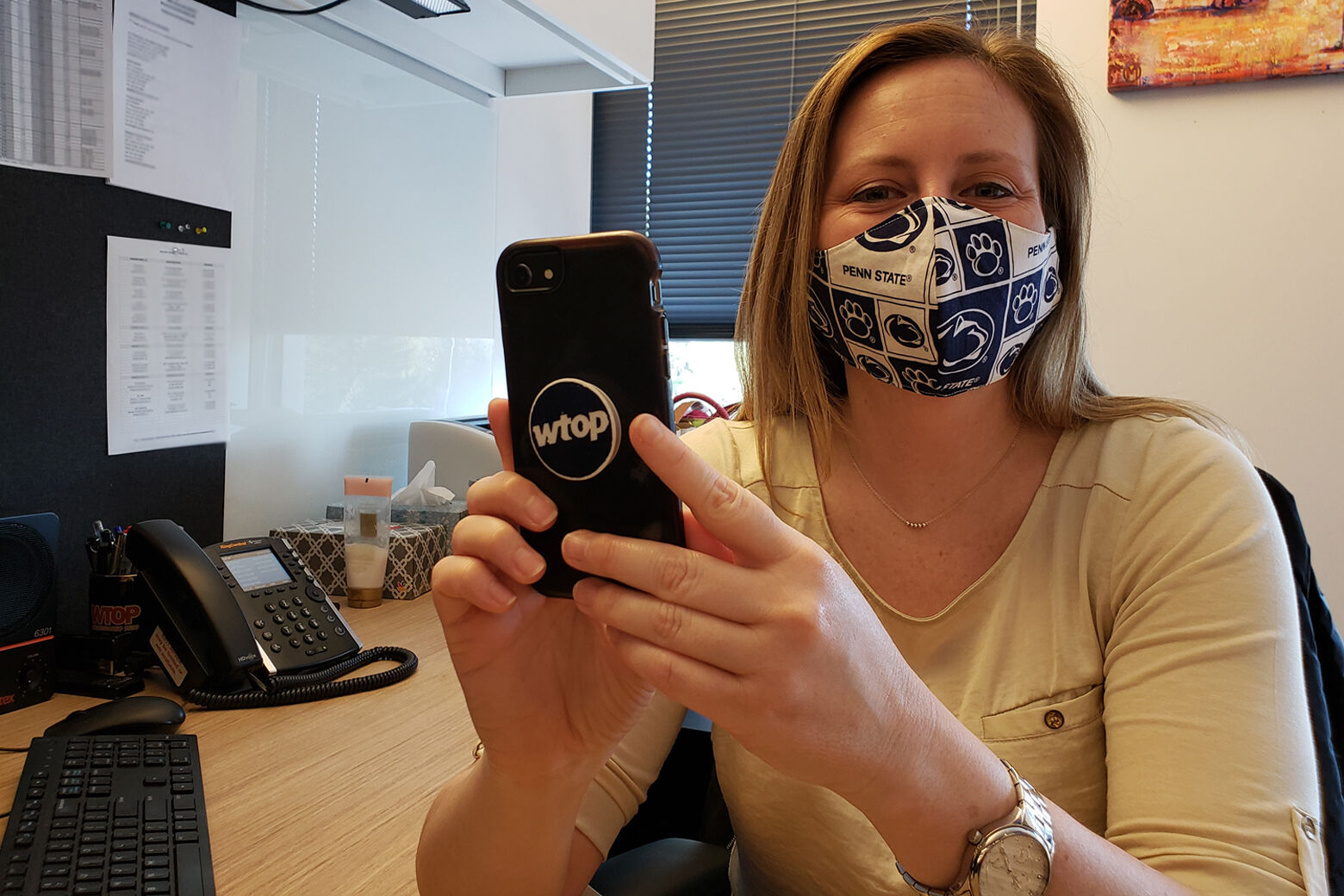
It’s weird to think that our WTOP colleagues and friends working from home have had a completely different experience over the past month.
My colleague Will Vitka was one of the first newsroom staffers to work from home. You can read about his experience. He continues to write about working at home.
With how fast things have changed in the last couple of months, we really can’t say for sure what will happen in the future. But the management team is beginning to think about how they will have people return to the newsroom when it is safe to do so.
In an April 17 staff meeting held over the intercom, Ziegler told staffers they are looking for the “smart way to bring people back.”
Whether it’s from a closet or a broadcast studio, no matter how you look at it, WTOP plans to always be here for you — 24/7/365.
WTOP’s Will Vitka contributed to this story.



